
FALL 2023 THE OFFICIAL MAGAZINE OF THE CANADIAN HOME BUILDERS’ ASSOCIATION MyHouseDesign/ BuildTeamLtd. Surrey,BC Industry economic update pg 30 Kitchens & Baths Heading toward a Net Zero future Canadian Publications Mail Agreement # 43643067

AND TIGHT DEADLINES. ATTICS » AttiCat ® Expanding Blown-In Insulation System » ProPINK® FIBERGLAS® Blown Insulation » PINK NEXT GEN™ FIBERGLAS® Insulation BASEMENT FLOORS » FOAMULAR® NGX ™ CODEBORD ® or C-200 XPS Insulation BASEMENT EXTERIOR WALLS EXTERIOR INSULATION » FOAMULAR® NGX ™ CODEBORD ® or C-200 XPS Insulation INTERIOR INSULATION » FOAMULAR® NGX ™ CODEBORD ® or C-200 XPS Insulation » PINK NEXT GEN FIBERGLAS® Insulation » THERMAFIBER® RAINBARRIER® CI HIGH COMPRESSIVE (80) Mineral Wool Insulation EXTERIOR WALL STUD CAVITY: KITCHENS & BATHROOMS » PINK NEXT GEN FIBERGLAS® Insulation EXTERIOR WALL: INSULATED SHEATHING » THERMAFIBER® RAINBARRIER® CI HIGH COMPRESSIVE (80) Mineral Wool Insulation » FOAMULAR® NGX ™ CODEBORD ® or C-200 XPS Insulation ENERGY EFFICIENT RENOVATION SOLUTIONS INTERIOR PARTITION WALLS: BEDROOMS, BATHROOMS, PLAYROOMS & HOME OFFICE » QUIETZONE® PINK® FIBERGLAS® Acoustic Insulation THE PINK PANTHER™ & © 1964–2023 Metro-Goldwyn-Mayer Studios Inc. All Rights Reserved. The colour PINK is a registered trademark of Owens Corning. © 2023 Owens Corning. All Rights Reserved. The Right Choice™ for your business and your customers. You need to meet tough codes while hitting tight budgets and deadlines. Your homebuyers want to know they’re getting a home that will be comfortable for a lifetime. PINK® Insulation makes it easy to do all that — making it the right choice for the homes you renovate today.
FOR CONTRACTORS WITH HIGH STANDARDS



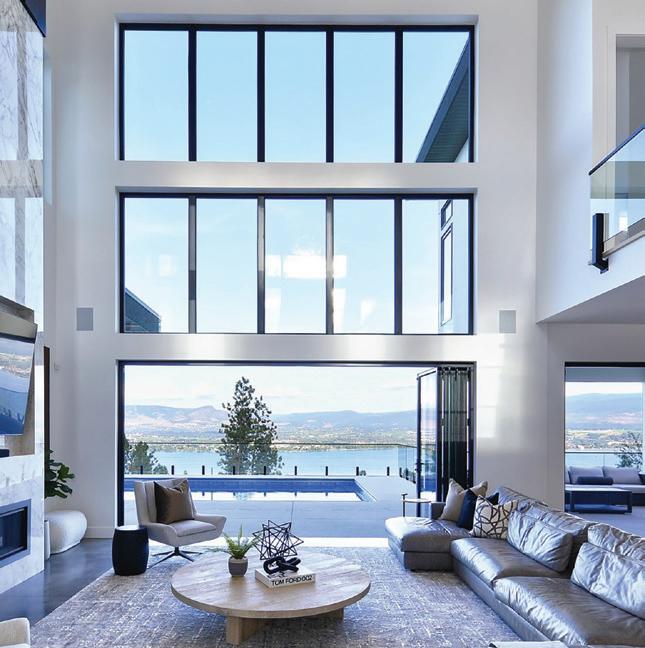
With Westeck Windows & Doors www.westeckwindows.com sales@westeckwindows.com 1-877-606-1166 CONTACT US TODAY INNOVATIVE CUSTOM SOLUTIONS FOR TODAY’S ENERGY EFFICIENT HOMES DREAM BIG DISCOVER DESIGN FREEDOM

6 PRESIDENT’S MESSAGE SUE WASTELL Impacts of industry 8 CEO’S MESSAGE, KEVIN LEE Federal pressure 12 MEMBER PROFILE Terra View Custom Homes Ltd. – an award-winning Net Zero production homebuilder 16 RENOVATORS’ CORNER National Renovation Code – what proposed changes for ‘alterations to existing buildings’ mean for renovators FALL 2023 VOL.6 ISSUE 3 12 BE Your Best 4 BUILDINGEXCELLENCE .CA FALL 2023
18 BY THE NUMBERS
Performance metrics – understanding and comparing the energy performance of Net Zero Homes
Features
20 NET ZERO HOMES
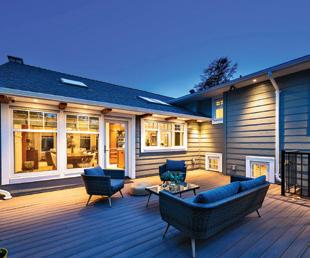


Towards Net Zero Renovations – working to build industry’s capacity to improve the energy efficiency of Canada’s existing housing stock
26 NET ZERO SOLUTIONS
Insights from the 2023 Net Zero Council sponsors
30 INDUSTRY ECONOMIC UPDATE
Downbeat data – builder sentiment highlights the challenges ahead
32 KITCHENS AND BATHS

Let’s get cooking and grooming – our latest compilation of trendy new products for the two busiest rooms in the house
36 INSULATION 101
A quick overview of your options
38 INSIDER INFO
Who is today’s buyer? Analyzing the financial fitness of first-time homebuyers in 2023
46 FEATURED COMPANIES
Suppliers and vendors
48 DEVELOPERS’ CORNER
EVE of a new era – innovative development in London, Ont. (un)paving the way for the future

50 THE GIVING BACK PAGE Community spirit
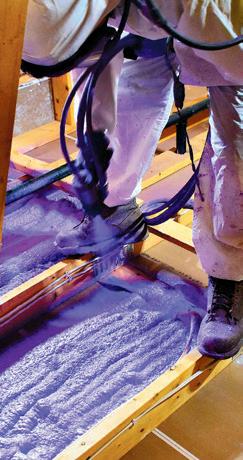
FALL 2023 THE OFFICIAL MAGAZINE OF THE CANADIAN HOME BUILDERS’ ASSOCIATION MyHouseDesign/ BuildTeamLtd. Surrey,BC Industry economic update pg 30 Kitchens &Baths Headingtoward a Net Zero future Canadian Publications Mail Agreement # 43643067 MY HOUSE DESIGN/ BUILD TEAM LTD. SURREY, BC 26 36 48 32 20 BUILDINGEXCELLENCE .CA
EDITOR
Wayne Karl wayne.karl@nexthome.ca
EXECUTIVE MEDIA CONSULTANTS
Jacky Hill
Michael Rosset
SENIOR VP, SALES NEXTHOME
Hope McLarnon
416.708.7987
hope.mclarnon@nexthome.ca
DIRECTOR OF SALES, ONTARIO, NEXTHOME

Natalie Chin
416.881.4288, natalie.chin@nexthome.ca
SENIOR MEDIA CONSULTANTS
Nina Downs
1.888.532.2579
nina.downs@nexthome.ca
Amanda Bell
416.830.2911, amanda.bell@nexthome.ca
MANAGER, CLIENT RELATIONS
Sonia Presotto sonia.presotto@nexthome.ca
VOLUME 6, NUMBER 3 FALL 2023
CEO Kevin Lee DIRECTOR, MARKETING AND COMMUNICATIONS
Natasha Rombough
MANAGER CUSTOMER SALES/SERVICE
Marilyn Watling
SALES & MARKETING COORDINATORS
Gary Chilvers, Vi Nguyen
HOME SHOW MANAGER & NEWSPAPER CIRCULATION – GTA
Josh Rosset DISTRIBUTION distributionteam@nexthome.ca
ACCOUNTING INQUIRIES
accountingteam@nexthome.ca
VP MARKETING – GTA
Leanne Speers
DIRECTOR OF PRINT MEDIA

Lauren Reid–Sachs
VP PRODUCTION – GTA
Lisa Kelly
PRODUCTION MANAGER – GTA
Yvonne Poon
GRAPHIC DESIGNER & ASSISTANT MANAGER
Alicesa Pullan
GRAPHIC DESIGNER & PRE-PRESS COORDINATOR
Hannah Yarkony
GRAPHIC DESIGNER
Mike Terentiev
COMMUNICATIONS AND SOCIAL MEDIA OFFICER
Emily Fielden
MARKETING AND COMMUNICATIONS OFFICER
Chloe Perreault
Published 4 times a year by NextHome, on behalf of the Canadian Home Builders’ Association (CHBA), all rights reserved. No part of this publication may be reproduced in any form without written permission. Building Excellence, NextHome, and the Canadian Home Builders’ Association (CHBA) are not responsible for any claims or promises in any advertisement, nor for any unsolicited material sent to the magazine. Canadian Publications Mail Agreement # 40065416
Published by nexthome.ca

Advertising Call 1.866.532.2588 for rates and information. Fax: 1.888.861.5038
Copyright 2023 All rights reserved. All copyright and other intellectual property rights in the contents hereof are the property of NextHome, and not that of the individual client. The customer has purchased the right of reproduction in NextHome and does not have the right to reproduce the ad or photo in any other place or publication without the previous written consent of NextHome.
Terms Advertisers, the publisher is not responsible for typographical errors, mistakes or misprints. All prices are correct as of press time.
Editorial Submissions from interested parties will be considered. Please submit to editorial@nexthome.ca.
OFFICIAL MEDIA PARTNERS:
r
BUILDINGEXCELLENCE.CA

HVAC • Water Heaters • Water Purification • Smart Home • Ev Chargers A program for builders and developers aimed at helping you build more energy efficient, environmentally friendly homes. 866-764-8131 ® “Reliance”, “Reliance Home Comfort and the Reliance Home Comfort logo are registered trademarks of Reliance Comfort Partnership
Early this summer, CHBA released the latest Economic Impacts of the Residential Construction Industry factsheets. Produced for the national, provincial and municipal levels and using the latest data from Statistics Canada, the factsheets are used for government advocacy by all three levels of our association, as they use their collective voices to speak for us and advocate for a robust housing environment – for the success of our businesses and for Canadians.
In 2022, there were a total of 1.52 million on-site and off-site jobs created in new home construction, renovation and repair – which makes the sector one of Canada’s largest employers. Nearly two-thirds of the total number of jobs were concentrated in renovation and repair, while more than a third can be attributed to new home construction. Our work resulted in $107.2 billion in wages that show up in other consumer spending across the entire economy and help increase economic activity. Our industry is the largest single wealth-builder for most families, and provides for $211.3 billion in economic investment.
IMPACTS OF INDUSTRY
POLICIES NEEDED FOR RESIDENTIAL CONSTRUCTION TO REMAIN A HEALTHY DRIVER OF THE ECONOMY
BY SUE WASTELL , CHBA PRESIDENT

Many of us are still working on business brought in through our pipelines during the pandemic years’ boom. But with rising interest rates and prices for materials and labour still up, the outlook for many of our businesses is looking much more challenging. In June, I travelled to Ottawa where I – along with others on the CHBA leadership team – met with the Governor of the Bank of Canada. We explained the challenges that rising interest rates are having on our industry, pulling in data from CHBA’s Housing Market Index (HMI) and personal examples to show the connection among higher interest rates, affordability, housing supply and a more challenging environment in which we’re now trying to build. While their objective is to get inflation under control, it means that other government policies need to be altered in favour of new construction and improved affordability if we’re to address the housing supply shortage and increase starts.
In June, I attended the St. Thomas and Elgin HBA Trades Appreciation BBQ, where I got to speak with members who are integral to homebuilding, renovating and repair. We need more skilled tradespeople in our industry, and more support for the ones already working to make it their career, and CHBA has been hard at work on many fronts in this respect. Among other federal announcements just prior to the STEHBA event was the announcement of the creation of category-based selections within the Express Entry system to help address labour shortages in our industry, which is a big win for the association and its members.
I also attended the OHBA Southwestern Ontario Housing Summit, where many of you told me of the barriers you’re facing to getting more housing supply online. Let’s hope that the federal government’s $4-billion Housing Accelerator Fund (HAF), the design of which CHBA informed, will succeed in incenting and supporting municipalities in taking measurable steps to increase the number of homes that get built. The association – nationally, provincially and locally – is pushing for municipalities to take advantage of the fund in ways that will contribute to more market-rate housing supply and help address affordability issues across Canada. As part of those efforts, CHBA spearheaded and coordinated a municipal supply campaign with many of our local/provincial associations across Canada. If there is good uptake on the HAF, it should mean many cities see development approval times sped up, outdated zoning rules amended, efforts made to tackle NIMBYism and more.
This fall promises to be a busy one with association business and more travel. It’s wonderful to see so many of you back out at your local events – there’s nothing quite like getting together in person to build a supportive and knowledgeable community of industry peers, and the on-the-ground experiences that you pass along to me and everyone working for you in the association are invaluable. So, keep up the good work, and keep encouraging more in the industry to join your local association to help strengthen our collective voice at all three levels of government.
PRESIDENT’S message
8 BUILDINGEXCELLENCE .CA FALL 2023





















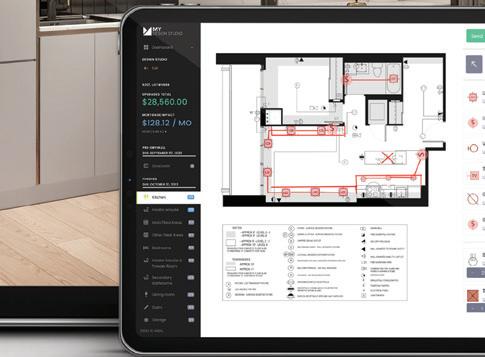






It was a busy summer at the national level of the association.
Results from CHBA’s Q2 Housing Market Index (HMI) were published in early August, hot on the heels of another interest rate hike by the Bank of Canada and unimpressive July housing starts data from CMHC. Along with other industry insights, CHBA’s HMI indicated that 67 per cent of panelists stated that the slowdown in the market is causing them to build fewer units, and 22 per cent said that the slowdown is causing them to cancel projects entirely. Those numbers, which give shape to how rising interest rates are – and will be – affecting housing supply, caught the attention of national and local media, resulting in extensive media work as CHBA’s HMI was brought into the conversation on TV, radio, online and social media news. (See more on the 2023 Q2 HMI on page 30.)
CHBA has been, and remains, in regular contact with officials at various levels at BoC and government departments and agencies, using the results of the HMI to communicate the clear link between higher interest rates, affordability, housing supply and a more challenging environment to build. CHBA
FEDERAL PRESSURE
GOVERNMENT FEELS THE HEAT AS HIGHER INTEREST RATES AFFECT HOUSING INDUSTRY
BY KEVIN LEE, CHBA CEO


advises that if policies are not altered in favour of new construction and improved affordability, then there is no chance of addressing the housing supply shortage and increasing housing starts. CHBA’s press release in response to BoC’s rate hike reoutlined policy changes needed to support homebuyers, improve the viability of purpose-built rental developments and limit additional slowdowns in new home supply.
Currently, the industry is not even close to on track to double housing starts – which is what the federal government rightly said was needed over the next 10 years to address Canada’s supply shortage. The shortfall has put the federal government under fire. In a move to provide a different and polished voice to the issue, Sean Fraser was recently appointed the new Minister of Housing, Infrastructure and Communities. CHBA has previously engaged Minister Fraser in discussions about housing and labour through his previous immigration portfolio, and he spoke at CHBA’s Day on the Hill reception back in May.
Demonstrating just how much the conversation has turned in the last few months against the former goodwill the federal government garnered from prioritizing housing, recent polling by Leger now shows that Canadians are split on who to blame for the housing crisis (40 per cent blame federal, 32 per cent provincial, six per cent municipal, 22 per cent not sure). It is anticipated that the government will use its upcoming fall economic statement to attempt to temper negative public opinion. CHBA has been engaged with officials on many fronts in this regard, and formally submitted its recommen-
dations for the next federal budget. CHBA will continue to engage with political and departmental officials throughout the year to address issues important to the sector.
In other recent news in support of builders, renovators and developers, advocacy by CHBA resulted in no further increase to duties on U.S. imports of gypsum board into western Canada, benefitting builder and renovator members across the country.
Renovators will also be interested to learn that proposed code changes to alterations to existing building (such as renovations), which a volunteer working group established by CHBA provided input into, are expected to be approved soon, and open to public review in early 2024. (Read more on page 16).
Challenges for developers with de facto land expropriation by governments are a major issue for our industry, but significant progress is being made by CHBA through engagement with cases in the Supreme Court of Canada that set precedent for all rulings across the country. Last fall, CHBA was a successful intervenor in a Supreme Court precedent-setting case out of Halifax, where the successful ruling now makes it easier for developers and property owners to be compensated for government action that removes all reasonable uses of their lands. This was a major victory for CHBA’s development community. CHBA is looking to repeat that success in a new case out of St. John’s.
As we head into what will no doubt be a busy fall, members are encouraged to subscribe to Industry Highlights, our media scan on housing issues and developments, with CHBA commentary, by emailing communications@chba.ca.
CEO’S message
10 BUILDINGEXCELLENCE .CA FALL 2023











TERRA VIEW CUSTOM HOMES LTD.
AN AWARD-WINNING NET ZERO PRODUCTION HOMEBUILDER
BY NATASHA ROMBOUGH, DIRECTOR OF MARKETING AND COMMUNICATIONS, CHBA
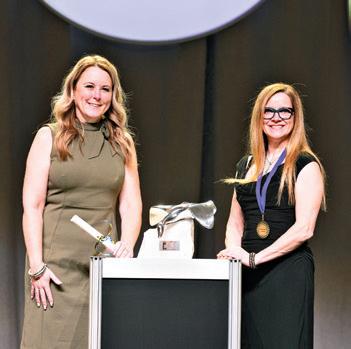
Based in Guelph, Ont., Terra View Custom Homes Ltd. won this year’s Best Production Net Zero Home Award. In many ways, the accolade is a testament to the path the company has been on for many years now to be at the forefront of energy efficient homes that are appealing to Canadians.

Company principals David Brix, president of Terra View, and Andrew Lambden, CEO, have been friends since high school. Lambden started the company in 1991 while Brix was pursuing first a degree in science, followed by one in architecture. Once Brix graduated, he began designing all the homes that Terra View built, then worked his way to president. These days, Brix is involved in many aspects of the company, including land development, pursuing their Green initiatives, designing the houses and managing staff. “I like the variety in
my day,” he says, “especially if I get some quiet time to design houses.”
THE JOURNEY TO NET ZERO
Under Lambden and Brix’s leadership, Terra View has always pushed the envelope. In 2006, during the height of Al Gore’s An Inconvenient Truth movement, they attended the first West Coast Green conference for those who wanted to build better and smarter. When Energy Star came out, they jumped on the pilot in 2006 and have built Energy Star homes since. They built a couple of LEED Platinum homes, including a “Green Dream Home” for their local Rotary Club around 2009, which Brix says was a great opportunity for them to be able to vet several different programs. Since the home was opened to the public, they were able to bring through students, building departments,
FAST FACTS
Company Name: Terra View Custom Homes Ltd.
Head Offices: Guelph, Ont.
Number of Full-Time Employees: 16
Approx. Annual Gross Revenue: $30M
Projects per year: 36 homes/year
MEMBER profile
VP Sales & Marketing, Lisa Schuett (left)
12 BUILDINGEXCELLENCE .CA FALL 2023
and builders to show them what they could do (though the technology was rather expensive at the time).
Working on his philosophy that “the most environmentally friendly home you can build is not replace the one you have,” Terra View also designed a home ready for aging in place, one that was barrier-free with wider doorways and an elevator. Many seniors like the idea of downsizing to bungalows for main floor living, but as Brix points out, they still lose access to half the home if they can’t manage stairs. He is surprised that elevators and aging in place features are not an option that buyers are selecting, but it’s still a feature Terra View is willing to build in.
Then, when the Canadian Home Builders’ Association launched its Net Zero Home Labelling Program, Terra View was quick to rise to the challenge and was among one of the first homes labelled in Canada early on in the program in 2017. Since then, the company hasn’t built anything less than Net Zero Ready.



As far as Brix is concerned, building to Net Zero at this point in time just makes sense. “Building codes are going to force builders to build to Net Zero by 2030, so why not do it
FALL 2023
Entries open for CHBA National Awards for Housing Excellence


now, get out in front, and help bring the industry up, and use it as a marketing advantage,” he says. “I like the fact that when someone comes into our model home, they can’t just compare it to any other house.” To make sure that potential buyers understand the difference in the product that Terra View offers, the company has many training sessions with their sales staff ensuring that they understand how Net Zero Homes work and what benefits the homeowners receive.
Moving to Net Zero didn’t come without its challenges, especially for production models. Each home needed to be designed
Coming CHBA Events
OCT. 23 TO 27, 2023
CHBA National Fall Meetings
Ottawa
with sufficient roof capacity for eventual solar panels. Every single home needs to be energy modelled on every single available lot, with every orientation. Those calculations require a lot of upfront work, including discussions with the local utilities to make sure everything is feasible before selling the homes.
However, any builder that is among the first to build to Net Zero in their area may come across challenges. As Brix explains it, “when you’re on the leading edge, you get a lot of cuts along the way. We’re clearing the way for those following behind us.
MAY 6 TO 10, 2024
Home Building Week in Canada
Saint John, NB
13 BUILDINGEXCELLENCE .CA FALL 2023
The Avonlea Elevation C, Model Home at Heart Village –winner of the 2023 Best Production Net Zero Home
TOTAL CUSTOMER SATISFACTION
Terra View stakes its reputation on homeowner satisfaction, and Brix personally meets every purchaser, explaining the company’s construction process and making sure clients feel that all their questions and concerns have been addressed.
Buyers can choose from 14 base floorplans, each with three elevations they can customize, including making adjustments to the floorplans to accommodate their needs. One of their most common customizations is including an accessory apartment in the basement, which Brix says approximately 80 per cent of people opt for. The apartment includes its own side entry door, sprinklers in the mechanical room, and everything needed to easily convert the space into a legal secondary suite down the road if the owners choose. The possibility of having the space for aging parents, adult children or rental income down the road gives buyers an added sense of security.
ASSOCIATION INVOLVEMENT
Terra View first joined its local homebuilders’ association in Guelph in the early 1990s as a way to meet tradespeople and other contacts that would help grow the business. Lambden served as president of the Guelph and District HBA, from 1998 to 1999; vice-president of sales and marketing, Lisa Schuett, is currently on the HBA’s board of directors. Brix credits the association as a resource that has helped the company and
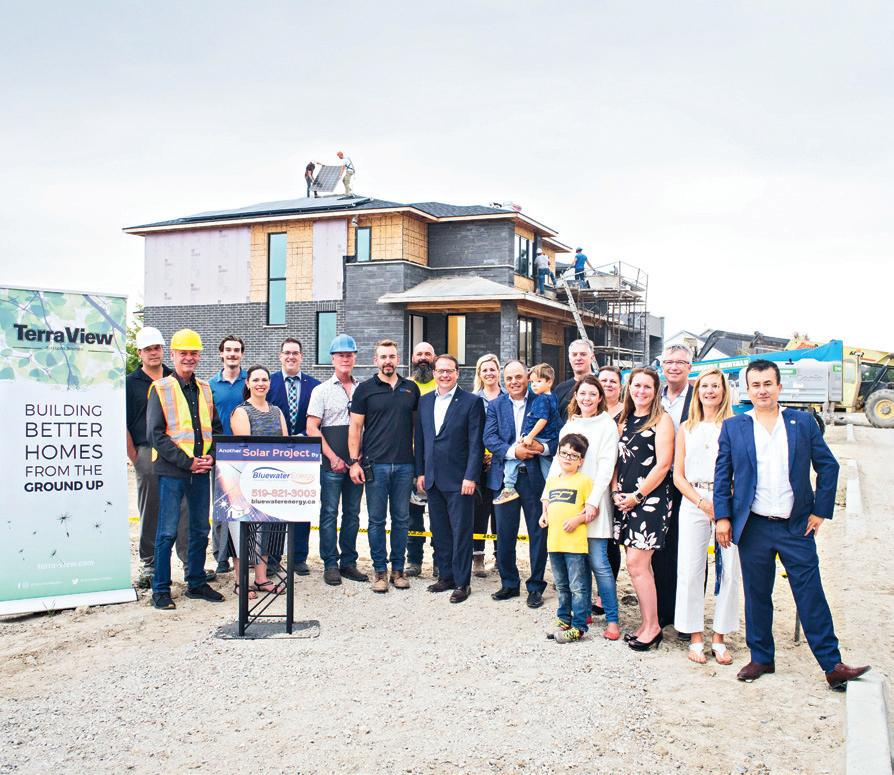
other builders come together to fight issues affecting them, citing a recent appeal against recent municipal zoning changes. Terra View has also been part of the association’s efforts to help members with voluntary adoption of Net Zero Energy Housing, having formerly held a seat on CHBA’s Net Zero Council.
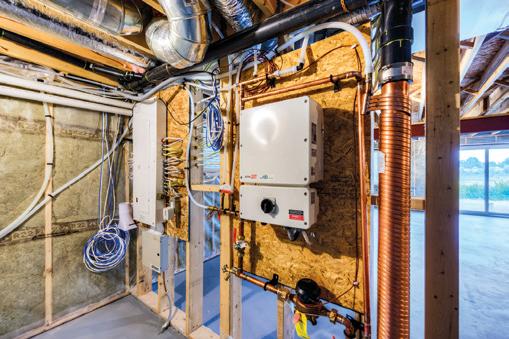
AN AWARD-WINNING HOME
This year, Terra View won the Best Production Net Zero Home for The Avonlea Elevation C, Model Home at Hart Village in CHBA’s National Awards for Housing Excellence competition. Like every home eligible to be entered into the category, it met all the technical requirements to achieve a label through CHBA’s Net Zero Home Labelling Program. The home is very contemporary, which Brix says most buyers these days select over their traditional options. Like all their models, it’s designed to accommodate an accessory apartment in the basement and have a versatile floorplan, including the option to use the attic as living space. The Avonlea Elevation C has a wideopen floorplan, and a lot of glazing. The windows are so large, in fact, they need to be glazed in the house.
Brix says the company takes full advantage of any awards it wins – advertise the accomplish-
ment, using the opportunity to generate social media buzz, and display the trophy in model homes. “Winning an award buys you credibility and recognition,” says Brix. “After we won the award, buyers coming in were well aware of the win and knew the home was a winner.”
A CULTURE OF PRIDE
A wonderful thing has come out of Terra View’s Green initiative philosophy. Brix says that while the company has been pushing that agenda because it’s the right thing to do, it has resulted in building a strong work culture. “People working for us feel like what they’re doing actually matters,” he says, “and they want to be part of an organization that’s doing what it can.” Terra View helps maintain this philosophy by staying true to its principles and offering employees the opportunity for continuing professional development through attending courses they’re interested in that will also help the company in its mission.
It’s clear that Terra View has stayed true to its vision over the last 32 years in business. Its commitment to building better and staying on the leading edge is creating an impactful legacy.
For more images from this winning project, visit the image gallery at chba.ca/ housingawards.
BUILDER profile
14 BUILDINGEXCELLENCE .CA FALL 2023
Solar topping off ceremony



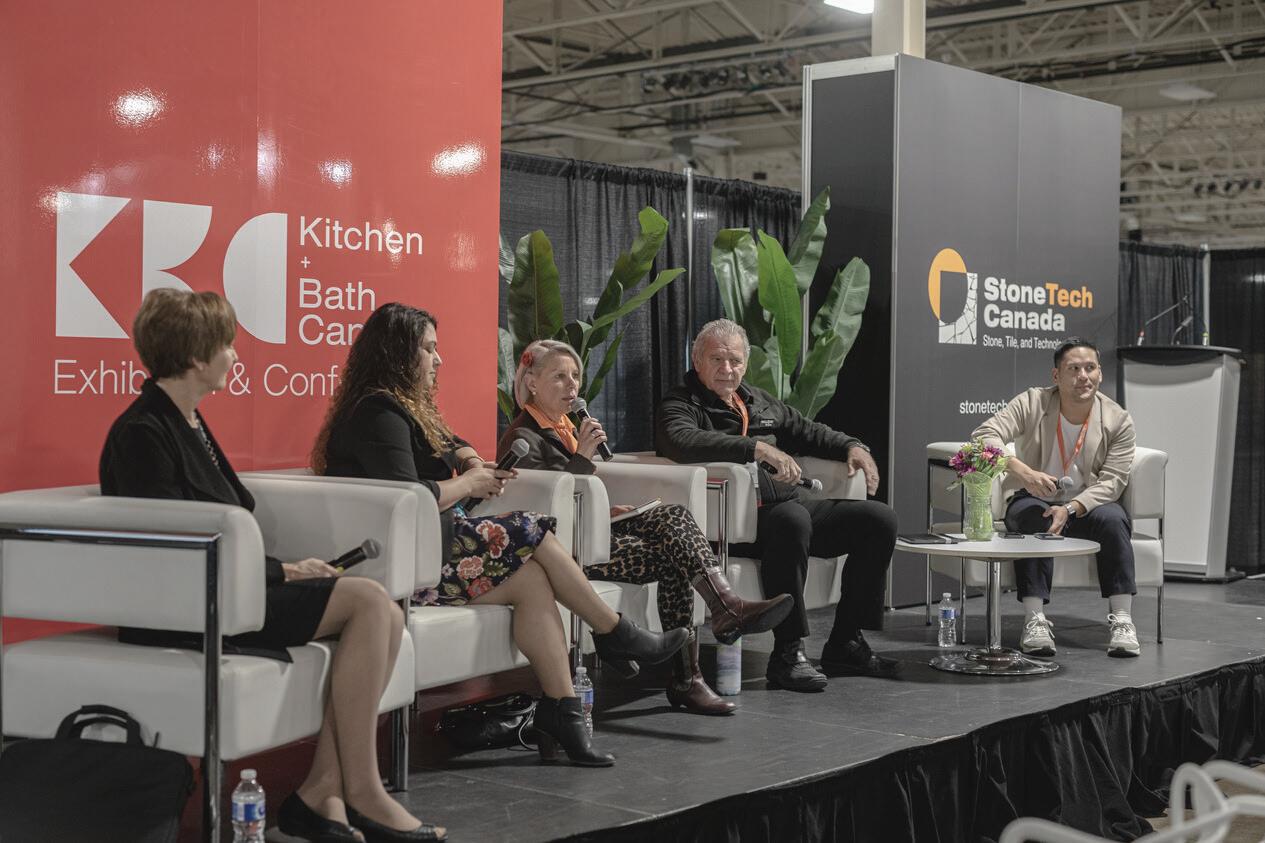













Co-Locatedwith FeaturedPavillion October 25-27,2O23 TorontoCongressCentre 3RDEDITION JoinCanada’sonlytrade showdedicatedtothe Kitchen&Bathindustry ExclusiveMediaPartner StrategicPartners Registernow kbcexpo.com Usepromocode NEXTHOME23
NATIONAL RENOVATION CODE
WHAT PROPOSED CODE CHANGES FOR ‘ALTERATIONS TO EXISTING BUILDINGS’ MEAN FOR RENOVATORS
BY FRANK LOHMANN, DIRECTOR, BUILDING SCIENCE, CHBA
Changes are coming to the National Building Code and the National Energy code that will, for the first time, make these codes applicable to renovations – or, as the codes will call it, “alterations to existing buildings.” In response, CHBA established a 29-person working group, along with extensive work by CHBA staff, to best inform the code development process from an industry perspective.
In addition to new homes, Canada’s construction codes theoretically already apply to “the alteration, reconstruction, demolition, removal, relocation and occupancy of all existing buildings.” The problem is that the current codes do not contain any specific requirements for existing buildings, which has resulted in a patchwork approach across Canada where each municipality determines their own method for which requirements apply in full and which ones are exempt. This often causes confusion among renovators, regulators and building owners alike, and obviously presents an undesirable degree of disharmony for Canada’s renovation market, which makes up more than half of Canada’s building construction GDP.
Part of the motivation for the renovation codes was the need to improve the energy efficiency of Canada’s existing housing stock to reach Canada’s climate change goals in significantly reducing greenhouse gases. While more than a third of Canadian homes standing today were built before 1983 – and likely in need of a significant energy upgrade – the new codes will not mandate energy upgrades. Rather, the renovation code will only apply whenever an
owner voluntarily undertakes a project where at least one portion of the renovation touches the building envelope, the space heating system or the water heating system.
Some of the guiding principles for the development of the code changes demand that the renovation requirements be reasonable, pragmatic and that they avoid placing an undue burden on building owners. Policy makers have recognized, in part thanks to CHBA, that if building code requirements were applied to existing buildings in the same way as new construction homes, it would result in costly and onerous renovations and run the risk that many of the renovations would be driven to the underground economy. CHBA remains engaged to advocate that the proposed requirements reflect these principles.
“Governments at all levels will need to find ways to help more homeowners get the financial assistance they need to renovate their homes for increased energy efficiency if they’re serious about Canadians reaching Canada’s GHG targets for personal residences,” says Kevin Lee, CHBA CEO. “Otherwise, the risk is that homeowners will go to underground contractors for their renovation needs, skipping permits and jeopardizing their largest asset –their home.”
CHBA has been advocating for the federal government to provide homeowners with more support and incentives, such as the Greener Homes Initiative that will provide $5,000 grants for energy retrofits using the EnerGuide Rating System, and which can be stacked on top of local municipal incentives.

Another way to help would be to allow substantial renovations, such as those reaching Net Zero Ready performance, to qualify for the GST/HST new housing rebate. While the renovation code in the 2025 codes will exclusively cover energy efficiency requirements, it will not mandate net zero ready levels but rather make sure that any renovation at least reaches the base code requirements in Section NBC 9.36. that have the code for new homes since 2012.
The upcoming changes prompted CHBA to establish a 29-member volunteer working group, made up of renovators, energy advisors, HBA staff from across Canada and national CHBA staff. The group met throughout May and June and provided its feedback to code committees on how HVAC and service water heating system, fenestration, airtightness and thermal resistance of assemblies should be dealt with during a renovation. Several of the working group’s suggested revisions were accepted by the Task Group of Alterations to Existing Buildings, while some revisions are still under discussion.
On Aug. 23, the Standing Committee Energy Efficiency reviewed the proposed changes. The Standing Committee is expected to approve all changes before Oct. 5. They will be available for the public review in early 2024, which will offer all members an opportunity to review the changes and provide comments. CHBA will be communicating to members when the review period is open, where to access the information, and how to comment.
RENOVATORS’ corner
16 BUILDINGEXCELLENCE .CA FALL 2023
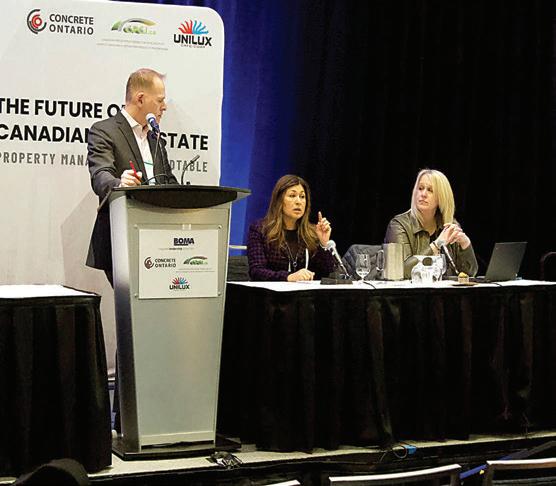


THE BUILDINGS SHOW thebuildingsshow.com Nov 29 - Dec 1 2023 Metro Toronto Convention Centre CONNECT. INNOVATE. BUILD. Buildings Excellence Subscribers Save 10% with code EXCELLENCE
BY THE numbers
PERFORMANCE METRICS
UNDERSTANDING AND COMPARING THE ENERGY PERFORMANCE OF NET ZERO HOMES
BY BRETT CASS, TECHNICAL MANAGER, NET ZERO ENERGY HOUSING, CHBA
The CHBA Net Zero Home Labelling Program is delivered through a national network of CHBA Quali ed Net Zero service organizations, trainers, energy advisors, builders and renovators that design, model, build/renovate, test and inspect each home. The program has become an important stepping-stone in Canada’s pursuit to a more sustainable future. Each year, CHBA publishes a Program Summary Report which takes a deeper look at the performance of these homes. The report supports CHBA members’ voluntary adoption of Net Zero housing by strengthening members’ knowledge and awareness through the sharing of information.
PROGRAM GROWTH

Since the pilot in 2015-16, the program has labelled more than 1,400 homes. In 2022, 425 homes were labelled, which is a 75.6-per-cent increase over 2021. Interestingly, in the last three years, there’s a trend showing more homes labelled as Net Zero Ready in comparison to homes labelled as Net Zero.
Energy breakdown of an average Net Zero Ready Home vs an average home built to meet code
Annual energy consumption is de ned as the amount of energy required to operate the home on an annual basis. This includes energy required for space heating, space cooling, water heating, ventilation and occupant loads (which is the lighting, appliances and plug loads). On average, a Net Zero Ready Homes uses less than half the energy of a code-built home.
AVERAGE NEW CANADIAN HOME = 100 GJ 50% 20% 25% 5% Space Heating Water Heating Occupant Load Space Cooling AVERAGE NET ZERO READY HOME = 45 GJ 52% 26% 16% 3% 3% Space Heating Water Heating HRV/Fans Occupant Load Space Cooling 18 BUILDINGEXCELLENCE .CA FALL 2023
The chart below compares the annual energy consumption of Net Zero and Net Zero Ready Homes to their heated oor area. Each dot represents one of the 1,117 homes labelled to the end of 2022. There’s a strong correlation between the size of the home and the amount of energy consumed annually.
In order to compare homes of different sizes, a normalized metric called Total Energy Use Intensity (TEUI) can be used. To calculate the TEUI, you take the total annual energy consumption and divide by the heated floor. A lower value indicates better performance. The chart below shows the same 1,117 homes but plotted based on their
TEUI. The chart shows that, in general, smaller homes often have a higher TEUI than larger homes. This is because not all energy consuming loads scale as the buildings floor area decreases in size. The energy consumption required for space heating and cooling does scale as the floor area of a building decreases, although the energy consumption of loads such as water heating, and appliance energy does not scale. Therefore, a smaller heated floor area can impact the ability of a home to achieve a lower TEUI than a large home, even though the smaller home may consume far less energy overall.
A TEUI could be calculated for the pie charts on the opposite page. If both homes have a heated oor area of 250 sq. m. (2,690 sq. ft.) then the

code-built home would have a TEUI of a 0.40 GJ/sq. m./yr and the Net Zero Ready Home would have a TEUI of 0.18 GJ/sq. m./yr.
There are several home performance metrics, such as total energy use intensity (TEUI) that help us to better understand and compare the energy performance of homes. The 2022 Net Zero Program Summary Report looks at a variety of performance metrics, including total annual energy consumption, whole home heat loss, total energy use intensity, operational carbon emissions intensity and more. CHBA members can download the annual summary reports for free (non-members can purchase them) at chba.ca/nzhlpsummaryreports.
ANNUAL ENERGY CONSUMPTION BY FLOOR AREA TOTAL ENERGY INTENSITY BY FLOOR AREA 0 100 200 400 500 600 700 800 900 1000 Annual Energy Consumption (GJ/yr) 120 100 80 60 40 20 0 Detached Homes Attached Homes Floor Area (m2) 0 100 200 300 400 500 600 700 800 900 1000 Detached Homes Attached Homes Floor Area (m2) 0.70 0.60 0.50 0.40 0.30 0.20 0.10 0.00 Total Energy Use Intensity (GJ/m 2 /year)
19 BUILDINGEXCELLENCE .CA FALL 2023
TOWARDS Net Zero RENOVATIONS
BY NATASHA ROMBOUGH, DIRECTOR OF MARKETING AND COMMUNICATIONS, CHBA
Housing is more complex than the average Canadian realizes. But its intricacies are well known to anyone in the residential construction industry. And for those who focus on high performance housing, especially Net Zero homes, the challenges and barriers can be formidable if you’re trying to tackle them alone.
CHBA’s Towards Net Zero Renovations initiative is assembling experts to tackle those

roadblocks for home renovations together. It’s bringing key players together to educate, collaborate and build Canada’s capacity to achieve its emissions targets. In addition to the valuable perspective and input from renovators and energy advisors, the five-year initiative also has municipalities, building inspectors and manufacturers at the table to raise awareness of what it will take to retrofit Canada’s housing stock.
WHY RETROFITS
Canada has committed to achieving net-zero emissions by 2050. While the focus in the housing sector is often on new construction homes, even if all new homes built from now until 2050 were built to zero emissions, we would not hit our target. To reach Canada’s goals, the existing housing stock must be renovated for improved energy efficiency.
NET ZERO homes
20 BUILDINGEXCELLENCE .CA FALL 2023
WORKING
TO BUILD INDUSTRY’S CAPACITY TO IMPROVE THE ENERGY EFFICIENCY OF CANADA’S EXISTING HOUSING STOCK
There are more than 16 million existing homes in Canada, almost all of which can improve their energy performance. Many are also ripe for aesthetic and functional renovation and repair, which is often the best time to also renovate for energy efficiency as part of a larger renovation. This is especially true if the siding is being replaced, since improvements to the building envelope, especially the
airtightness, are the most impactful to improve the home’s energy efficiency.

This is a big opportunity for renovators. To bring as many homes as possible to net zero, it’s going to require that an army of people understand what it takes. That’s where the Towards Net Zero Renovations initiative comes in.
ABOUT THE INITIATIVE
CHBA and its members have a long history in leading energy efficiency in residential construction. The latest evolution has been the CHBA Net Zero Home Labelling Program, which was piloted in 2015 and currently has more than 1,400 homes labelled across Canada. Building on that success, after a two-year pilot CHBA officially launched its Net Zero Home Labelling Program for Renovations in October 2021.
The Net Zero Home Labelling Program provides the industry with a clearly defined and rigorous two-tiered technical requirement that recognizes Net Zero and Net Zero Ready Homes (for new and existing homes), as well as the builders and renovators who provide them. A national network of CHBA Net Zero qualified service organizations, energy advisors and trainers work directly with the renovators to design, model, test and inspect each renovation.
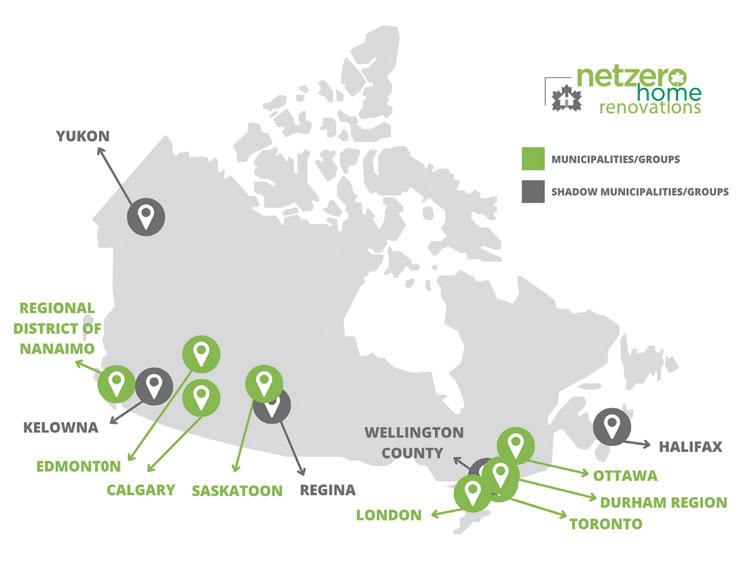
In early 2022, CHBA, with financial support from Natural Resources Canada, officially announced this new initiative titled “Towards Cost-Effective Net Zero Energy Ready Residential Renovations.” In collaboration with participating Canadian municipalities, local home builders’ associations, renovators and industry partners, the initiative’s objective is to target barriers to achieving net zero ready performance in existing homes, and to determine the most cost-effective solutions to renovating for higher levels of energy efficiency, including targeting Net Zero and Net Zero Ready.
CONNECTING WITH STAKEHOLDERS
Lynne J Strickland, CHBA’s Director, Initiatives, Net Zero Housing, is heading up the project. She says that the model of this initiative is unique in that municipalities that are incentivizing deep energy retrofits and/or net zero projects (typically via funding obtained through the Federation of Canadian Municipalities) are key project stakeholders in outreach for homeowner participation. CHBA is working with the municipalities to help accelerate their goals through the work of CHBA’s current net zero builders and renovators, prospective new members, and their network of industry professionals associated with their projects.
21 BUILDINGEXCELLENCE .CA FALL 2023
There are eight participating municipalities: The Regional District of Nanaimo, Edmonton, Calgary, Saskatoon, London, Toronto, Durham Region and Ottawa. These participants are exchanging staff time in return for training and net zero consulting support for the constituents in their area. They’re also responsible for determining which homes within their incentive program might be best suited to a net zero renovation, and then bringing those homeowners who are interested onboard in the hopes that the scope of their renovations can be elevated to get closer to net zero.


Five additional municipalities/regions are shadowing the project: The Yukon, Kelowna, Regina, Wellington County and Halifax are either in the process of developing their own incentive programs, are assessing where net zero fits into their programs or are in rural or remote areas that are considering implementing programs in the future. Along with the other eight municipalities, these five shadow participants attend the municipal working group meetings and benefit from the same information exchanges and networking. As with the other municipalities, part of the initiative’s funding will also allow training to be brought to the shadow municipalities/regions to build industry capacity.
The participating municipalities get together to receive updates from CHBA on the project, relay their barriers and capacity issues, to request support in communicating with homeowners, discuss financing models and to share what homes or archetypes might benefit from participating. Some are using properties they own, and others are canvassing homeowners, either on their own or through third party programs they’re working with.
CREATING EFFICIENCIES
To accurately identify barriers and pain points, it was determined that an industry scan was needed. CHBA brought together its lead consultant on the project, Building Knowledge Canada, and a Net Zero Reno Advisory Group, consisting of experienced members from across Canada, to identify the roles and tasks that happen throughout a net zero renovation, and the approximate time commitment needed for each. Through that exercise, they found that to move a renovation project from initial discussions, through the design phase and into a contract the homeowners can sign, the time spent by energy advisors (EAs) was more than double that of renovators. “The first thing we needed to do was find and leverage tools to reduce the time needed by needed by EAs to perform the necessary calculations so that hiring an EA to do that work would be less cost-prohibitive to homeowners, and therefore more accessi -
ble for them to engage an EA,” says Strickland.
To do that, CHBA looked to leverage tools for industry that Natural Resources Canada (NRCan) was already developing through their Local Energy Efficiency Partnerships (LEEP) program. NRCan has been working with a not-for-profit called Volta Research Inc. to optimize several existing NRCan tools and make them available on a secure online server, functioning much faster to compute various aspects of home modelling. This would essentially allow an EA to sit down with a homeowner and make adjustments to the modelling in real-time rather than waiting hours or even days for calculations to run, allowing them to find the best options for the renovation – a game changer according to EAs who have tested the software. Due to the significant benefits this tool offers, the initiative is partially funding the development and roll-out, so that all renovations that are part of the initiative will be able to use it.
22 BUILDINGEXCELLENCE .CA FALL 2023
Net Zero Reno Bootcamp in Ottawa, March 2023
GO BEYOND THE BASICS



UNLOCK YOUR POTENTIAL WITH THE ULTIMATE HOME BUILDING AND RENOVATION BUNDLE
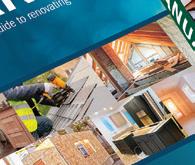


Renovators’ Manual



Takes a deep dive into applying building science to renovating for a wide variety of circumstances.
CHBA members save an extra $30 off discounted bundle pricing













Get yours today: chba.ca/bundle






chba.ca/housingawards
Builders’ Manual


The most authoritative guide you will find for building superior energy-efficient housing.



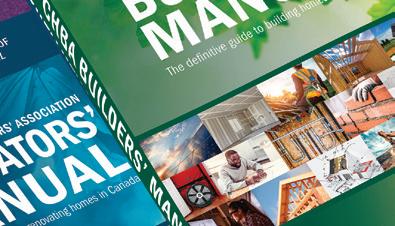











Adaptiv Home Renovation Manual











A comprehensive book on all aspects of living-at-home renovation.



TRAINING
The other major barrier identified through another industry scan was lack of training on how the integrated design process (IDP) should function for home renovations, especially when evaluating the cost-effectiveness of energy, emissions, and resiliency opportunities.. CHBA worked with NRCan and the Canadian Association of Consulting Energy Advisors (CACEA) in the summer of 2022 to explore existing resources for the IDP and customized them for the project’s 10 phases of a home renovation.
To deliver the training, which is paid for by the initiative, CHBA works with local home builders’ associations and municipalities to host in-person Net Zero Reno Bootcamps. Together with the CHBA Qualified Net Zero Trainers and Service Organizations, they encourage everyone in their networks to attend the Bootcamp, to cast a wide net and get as much regional participation as possible. To enroll, participants must first successfully complete a virtual Advanced Building Science prerequisite. The Bootcamp is a compressed intensive 2-day lineup that includes the Net Zero Builder Trainer (which focuses on how to achieve Net Zero), an introduction to the Integrated Design Process, and then the Net Zero Renovator Training. “With this Bootcamp we expanded it to every single stakeholder group in the chain, including building officials, the HVAC industry, solar consultants, students, energy advisors, renovators and builders – so that everyone a renovator and EA would be working with all receive the same information,” says Strickland.
Another desired outcome is building a local Net Zero Network and highlighting the benefit of leveraging the local homebuilders’ association as a go-to resource for municipalities and other stakeholders when they need information or qualified professionals to help guide or lead these types of projects.

RENOVATIONS
Next up for the initiative is the actual renovations. The goal is to have 100 to 150 Net Zero or Net Zero Ready Renovations by the end of 2024, which Strickland says is going to be a very challenging number to hit. Ideally, 10 to 15 renovations will be completed in each municipality so that there is a healthy
geographic and climate zone variety. Even better would be homes with various architypes, but it’s not required. Strickland is currently looking for renovators and energy advisors with clients looking to undergo a Net Zero or Net Zero Ready Renovation within one of the participating municipalities/regions.
One of the advantages to being part of the initiative is that the fees for your Qualified Net Zero Energy Advisor services and the cost of getting the home labelled will be funded by the initiative. So, if you’re a renovator or an energy advisor with a renovation coming up where the homeowner has expressed interest in going to Net Zero, Strickland encourages you to enroll. “You don’t have to be a Net Zero Renovator already to enroll, and there’s no obligation with enrollment to complete a Net Zero Renovation. Enrolling simply logs your project with CHBA, and qualifies it for the energy advisor to determine if the home is capable of getting to the level of energy improvement required to be part of the initiative.” As part of the initiative, there is also direct engagement with the municipality to explore all available incentives and rebates. Some participating municipalities are offering additional incentives for achieving Net Zero.
NEXT STEPS
After the renovation is complete, a full year of energy data for each home will be required by December 2025 to allow for analysis and reporting. Homes that achieve Net Zero or Net Zero Ready will be qualified through CHBA’s Net Zero Home Labelling Program to receive recognition, meaning more renovators will become qualified through the program as well. To complement this growing industry capacity, there must be well researched recommendations for effective rebates and incentives that result in homeowners voluntarily renovating for energy efficiency, and that’s something that will also be tackled through the initiative. And finally, the information learned over this massive multi-year process will be disseminated to industry, governments and the public through a variety of avenues at the conclusion of the initiative.
Strickland is looking forward to seeing the strides that will be made over the next couple of years. “This initiative has already highlighted what is working in one area, what’s not in another, and what we need more of across the country. That knowledge is helping us to start to address gaps and make improvements that will benefit our members, the entire industry, municipalities, and Canadians.”
“
This initiative has already highlighted what is working in one area, what’s not in another, and what we need more of across the country. ”
24 BUILDINGEXCELLENCE .CA FALL 2023
Photo courtesy of: Peter Darlington of Solar Homes Inc
TOUGH CALLS
MAKING DECISIONS IN REAL ESTATE AND CONSTRUCTION AMID UNCERTAIN ECONOMY

Rising interest rates, labour shortages and the potential for a recession have all had significant impacts on Canada’s real estate and construction industry. It can be daunting to make decisions about the business when you’re not sure what the economy will look like next month – let alone next year.
Do you slow down operations or stay optimistic and push forward? Here’s what you need to know before making any big decisions.
THINGS TO CONSIDER
You are constantly having to adjust plans depending on the state of the real estate and construction market. But right now, the stakes may seem higher.
The industry faced significant challenges and enormous opportunity coming out of the COVID-19 pandemic. As the market continues to cools toward the historical average, it may be time to reassess your business and approach the future from a different perspective.
Consider the following before you decide to slow operations or embark on a big new project:
• Staffing: Are you adequately resourced for the changing economic environment? Will it be necessary to hire or lay off staff if business picks up or slows further? What’s the market for the skill set you need? Assess your team and the capabilities, skills and strengths you need and have available.
• Internal business processes: Are you using the right systems, and do you have the necessary information to make the right choice for your business? Informed choices are impossible without detailed revenue and expense information.
• Benchmarking: How are other businesses in the region doing? What types of projects are
they undertaking? Have they changed the scope of their work to adapt and is their approach working? Comparative data for businesses similar in size and scope to yours will help you see how various decisions have panned out and which option is the most viable for you.
• Canvassing your internal environment: What does your cost structure look like? What will it cost you to hold off on a project or continue, full steam ahead? Have your financial team look at the market and assess the opportunities and obstacles.
• Pro forma statements: What does the forecast look like and is there variability? If you’re a homebuilder or condo developer, purchaser default risk is likely higher than in recent years. Many buyers committed to purchases that they may no longer be able to close on. Assess your risks and keep this a focus for your internal team.
WHAT’S NEXT?
Whether you’ve decided to slow operations or move forward, the fact remains: The market has changed and will keep changing. The last three years have illustrated that no industry is immune from economic uncertainty. It’s those that can adapt to adversity and plan for the unpredictable that continue to succeed.
Taking steps to better understand your business and the environment it operates
in will prepare you for whatever comes next.
A few things to keep in mind when planning for your future:
Timing: What is the market doing right now and how might that change? What would an extreme situation mean if you go down a certain path? While you can’t predict the future, you can assess the benefits and pitfalls to waiting or staying the course.
Organizational structure: Are the right people involved in making decisions? Are your teams’ goals and strategies aligned? Assess your organizational structure and adjust as needed to ensure long-term success.
Compensation strategies: Do you have the right compensation strategy help retain and/ or attract new talent? Consider the current labour shortage; there may be opportunities if other businesses are letting people go.
Tax strategies: Does the business have proper tax strategies in place? A skilled advisor can help you assess your tax strategies and determine if they’re working for you.
It’s a difficult time to make long-term business decisions. But keeping these thoughts in mind can help you understand what needs to be improved and how to map out your goals for the future.
For more information, contact Alex Levin, CPA, CA, Partner, Real Estate and Construction at alex.levin@mnp.ca.
SPONSORED CONTENT
25 BUILDINGEXCELLENCE .CA FALL 2023
Net Zero
SOLUTIONS
FROM THE 2023 CHBA NET ZERO COUNCIL GOLD AND SILVER SPONSORS
Case Study: Advanced exterior insulation strategies
Owens Corning

Owens Corning is a Gold Sponsor Member of the CHBA Net Zero Council, which focuses on innovative and high-performance housing solutions.
Thermafiber RainBarrier ci High Compressive Plus (110) Mineral Wool Insulation and Owens Corning FOAMULAR NGX C-300 Extruded Polystyrene Rigid Insulation, the team achieved the sought-after EnerGuide rating of zero and a CHBA Net Zero label for the home.
Thermafiber RainBarrier ci High Compressive Plus (110) Mineral Wool Insulation provides thermal and moisture control properties while enhancing fire resistance. FOAMULAR NGX C-300 Extruded Polystyrene Rigid Insulation offers superior moisture resistance and thermal performance, making it suitable for below-grade applications.
Using Owens Corning insulation products for net-zero construction and renovations has substantial benefits. They reduce energy bills,* lower greenhouse gas emissions and contribute to combating climate change. Net Zero Homes offer long-term savings, durability, comfort, indoor air quality and noise reduction, minimizing environmental footprints.
Net Zero Homes generate as much energy as they consume, appealing to environmentally conscious individuals looking to reduce utility bills and combat climate change.

A key aspect of Net Zero construction is the advanced building envelope, including airtightness, insulation and high-performance windows and doors. These components reduce heating and cooling loads, while energy-efficient mechanical systems further optimize performance and minimize operating costs.
Using advanced exterior insulation strategies can reduce labour and material costs by minimizing the need for interior insulation. Cedarglen Homes, a Calgary-based homebuilder, exemplifies the success of such strategies in constructing a CHBA Qualified Net Zero Home.
The project encountered challenges in aligning with trades professionals and selecting materials that met Net Zero requirements. However, by using high-quality materials such as Owens Corning
Cedarglen’s project highlights the crucial role of insulation in achieving Net Zero. Prioritizing quality materials and processes led to the successful construction of a Net Zero Home. Proper insulation not only reduces energy consumption and costs but also allows homeowners to reduce their carbon footprint responsibly.
CHBA members can access the Net Zero webinar “Cost-Effective Net Zero Achieved Through Collaboration: A Success Story” for more insights. It features representatives from Owens Corning, Cedarglen Homes, 4 Elements Integrated Design, and the Southern Alberta Institute of Technology, discussing the importance of collaboration in cost-effective Net Zero construction.
The webinar recording and slide deck can be found at chba.ca/nzwebinars.
*Savings vary depending on original amount of insulation in your home, climate, house size, air leaks, and personal energy use and living habits.

2023 NET ZERO sponsors
26 BUILDINGEXCELLENCE.CA FALL 2023
How high-performance windows and doors help homes get to Net Zero
All Weather Windows
A key part of a Net Zero Home is its superior building envelope. The envelope includes the home’s overall airtightness, the insulation of the exterior walls, floors, ceilings and foundation, as well as high-performance windows and doors.
All Weather Windows is proud of its dedication to innovation, which includes energy efficient windows and doors that play a vital role in helping homes qualify as Net Zero. These technologically advanced windows and doors are designed to minimize energy loss, enhance insulation, and create a more comfortable indoor environment.

All Weather Windows energy efficient windows come with the option of advanced glazing technologies that reduce heat transfer. Their insulated glass units (IGU or IGs) are made up of either two or three panes of glass, and the half-in. space in between is filled with argon, an insulating gas that acts as a thermal barrier. This means that a tri-pane window will prevent more heat loss than a dual-pane window. Upgrading to triple pane windows is one of the most economical ways to help meet Net Zero requirements when compared to a whole-home insulation upgrade or a full HVAC upgrade. Triple-pane windows will perform even in the most extreme climates, increasing the effectiveness of coatings by adding additional coated surfaces.
Low-emissivity (Low-E) coatings can be applied to different glass surfaces, reflecting heat back into the room during winter.
Another option is SunStop coatings, which block unwanted solar heat gain in the summer. These features help maintain stable indoor temperatures, reducing the need for excessive heating or cooling, and subsequently lowering energy consumption.

Further, well-sealed energy efficient windows and doors prevent air leakage. All Weather Windows products are designed with durable EPDM weatherstripping, providing a tight seal for preventing drafts and infiltration of outside air. This reduces the load on heating and cooling systems by maintaining a consistent indoor climate. By eliminating air leaks, All Weather Windows’ doors and windows effectively contribute to energy savings, helping homes achieve Net Zero performance. They even help to block out exterior noise.
These advanced building components are a growing cornerstone of energy efficient design, helping homes qualify for Net Zero by improving insulation, reducing air leakage, maximizing natural lighting, reducing exterior noise infiltration and facilitating the feasibility of renewable energy systems.
Find out more about how All Weather Windows’ products can help you qualify for Net Zero at allweatherwindows.com.
Toward decarbonization in buildings – a gas heat pump case study
Enbridge
The urgency of addressing climate change has propelled utilities to balance heating demands with decarbonisation goals. New North American greenhouse gas (GHG) emission reduction targets are pushing for heating systems exceeding 100% efficiency. Innovative, high-efficiency technologies tapping into sustainable energy sources have been gaining attention for building heating. Gas absorption heat pumps (GAHPs) have emerged as a technology boasting over 140% efficiency and slashing fossil fuel use and emissions by up to 50%.
GAHPs use natural gas to extract heat from the air, curbing energy consumption and greenhouse gas emissions. Driven by the absorption heating cycle, GAHPs mainly employ ammonia as an eco-friendly refrigerant with zero ozone depletion potential, as compared to other heat pump technologies. Functioning as outdoor units, they harvest thermal energy from the air to provide hot water for both space heating and domestic use.
Enbridge Gas Inc. has assessed GAHP technology through various field test projects in Ontario. Field test data show equipment efficiency reaching up to 140%, a remarkable improvement over existing boilers.
In a specific case study, a 65kW GAHP was integrated with a conventional boiler for domestic hot water heating in a Toronto multi-residential building in February 2022, with GAHP taking over a portion of the hot water heating load. The integrated system performed as designed and delivered reliable performance even in cold weather. For example, comparing a four-day period (January-February 2022) with similar outdoor temperature of -1C, the GAHP took on majority of the load consuming 83 m3 of natural gas, while the boiler consumed 35 m3, amounting to 118 m3 total consumption, marking a 25.7% natural gas saving versus the boiler-only system. Notably, both scenarios feature a city water temperature around 8°C.
In the energy transition journey, gas heat pumps offer an immediate option to significantly reduce building natural gas usage for space heating and hot water heating and lower GHG emissions. When low-carbon fuels such as renewable natural gas and low-carbon hydrogen become more widely available, gas heat pumps can work with those fuels, helping buildings reaching their net-zero goals.
Learn more about how Enbridge Gas is helping forge a path to Net Zero at enbridgegas.com/sustainability.

27 BUILDINGEXCELLENCE.CA FALL 2023
Rebate programs and building high-performance new homes
FortisBC
In British Columbia, FortisBC’s New Home Program has been providing rebates since 2011 to builders and developers for building energy-efficient homes that go beyond the minimum efficiency requirements of the BC Building Code. The program has evolved over the years to align its rebates with the BC Energy Step Code. In 2019, the Design Offer was introduced to encourage builders to collaborate on integrated design processes and use advanced building envelope and mechanical design.
By building well-insulated, airtight structures and using energy-efficient space and water heating systems, it’s possible to create homes that offer the best energy efficiency and comfort for homeowners.
Vancouver Island’s Hargrave Construction has demonstrated this through two recent custom home projects in Campbell River that achieved Step 4 and 5, respectively – and earned rebates from the New Home Program.
Dan Hargrave, the designer and drafter of both projects, explained that the design and construction of each custom home is driven by the client’s desire for a “good-quality house.”
By working with an energy advisor, the company was further able to build energy efficiency into each house. For example, the project that achieved Step 5 incorporated passive solar design, strategically placed windows and roof overhangs, and selected insulation and sealing materials to ensure that even the high cathedral ceilings did not require additional heating in winter. The project that achieved Step 4 had improved airtightness, insulated concrete forms, R22 batt insulation and a high-quality commercial-grade air barrier.
When it comes to selecting space and water heating systems, Hargrave says, “We want our clients to enjoy a comfortable home. They enjoy the comfort of natural gas for space and water heating, and the equipment operates reliably.”
The two homes for which Hargrave received rebates from the New Home Program were measured to be over 40 per cent more efficient than homes built to BC Building Code, which should result in long-term energy cost savings for the homeowners.
For homeowners interested in low-carbon options for their energy needs, FortisBC offers Renewable Natural Gas.* FortisBC customers can choose to designate a portion, or all, of the natural gas they use as Renewable Natural Gas to reduce their greenhouse gas emissions.

To learn how FortisBC helps builders create high-performance homes, visit fortisbc.com/build-renovate/building-newhomes-to-higher-steps-of-the-bc-energy-step-code.

*Renewable Natural Gas is produced in a different manner than conventional natural gas. It’s derived from biogas, which is produced from decomposing organic waste from landfills, agricultural waste and wastewater from treatment facilities. The biogas is captured and cleaned to create Renewable Natural Gas (also called biomethane).
Appealing electric solutions for multi-unit developments
Mitsubishi Electric Heating & Cooling Westman Village is a development by Jayman BUILT located in the community of Mahogany in Calgary. The project thoughtfully weaves convenience, diversity and accessibility into an all-inclusive suburban community concept. Redefining the way new homes are built, bought and lived in, the carefully designed community includes condominiums, townhomes, seniors’ residences and long-term leasing condos.
According to Dennis Aucoin, senior development manager for Westman Village, many of the prospective residents and homeowners were downsizing. To offer them an attractive product, the units needed to be quiet, and the building had to create a seamless transition with top-quality products that would meet high expectations. This includes everything from the finishes to the heating and air conditioning units. The heating and cooling units also had to be energy efficient, as Jayman BUILT prides itself on green construction.
That’s where Mitsubishi Electric came in. With more than 100 years of experience in providing reliable, high-quality products to both commercial and residential consumers all over the world, Mitsubishi Electric is a recognized world leader in the manufacturing, marketing and sales of electrical and electronic equipment used in information processing and communications, consumer electronics, industrial technology, energy, transportation and construction.
“We were attracted to the Mitsubishi Electric brand because we consider it the Cadillac of heating and cooling units,” says Aucoin.
The Westman Village project is Mitsubishi Electric’s largest Canadian multi-unit residential development. Mitsubishi Electric individual split and centralized variable refrigerant flow (VRF) units were chosen, thanks to their efficiency and reputation. Their whisper-quiet sound was also a deciding factor – the units emit about half the noise of a regular unit in a house. Further, the slim, suitcase-style units were also perfect for more compact living spaces.
Ease of maintenance was also a deciding factor. “For us getting into leased seniors and rentals, we wanted a product that was going to be somewhat maintenance free and last the test of time,” explains Aucoin.
Finally, the Mitsubishi Electric VRF units are all about consumer comfort and use unique design and engineering solutions to deliver it. Typically, a normal air conditioner runs at full blast, cooling the entire space then shutting off. But these units are built to get to a certain temperature and maintain it. Overall, this allows for lower energy use and improved comfort.
Learn more about Mitsubishi Electric systems at mitsubishielectric.ca.

28 BUILDINGEXCELLENCE.CA FALL 2023
Three indoor air quality solutions for energy efficient homes

Panasonic
Roy Nandram, president of award-winning home building company RND Construction Ltd., has built 20 Net Zero labelled homes in Ottawa, a record in the region. For a recent project, Nandram relied on Panasonic’s Indoor Air Quality (IAQ) solutions.
“Inadequate indoor air quality can pose difficulties, and in some cases, even hazards to breathing,” Nandram says. “Ensuring the safety of your home is paramount. I’m genuinely impressed by Panasonic’s reputation for quality, their exceptional customer service and the potential for my residence to automatically provide healthier air.”
Panasonic IAQ solutions, aptly named Breathe Well, exhibit their full potential when integrated. In RND Construction’s Net Zero secondary suite, the Intelli-Balance ERV 200, a self-balancing and highly efficient ventilation, stands out. It seamlessly interfaces with user-friendly smart controls from Swidget to deliver fresh air. Sensors can be effortlessly attached or detached, allowing for functional modifications.
These two ventilation and automation solutions qualify for the new IAQ Pick List for the CHBA Net Zero Home Labelling Program, a requirement effective from Jan. 1, 2024. This list represents a commendable initial step in assisting builders and renovators to embrace new technologies.
Transitioning from an HRV to an ERV constitutes a substantial enhancement to indoor air quality. Panasonic’s ERVs proficiently transfer both moisture and heat, so there is no longer a need for a condensate line and dehumidification. Furthermore, they are Energy Star and HVI-Certified for use in any North American climate zone.
Panasonic’s exclusive collaboration with Swidget, a manufacturer of smart devices based in Kingston, Ont., involves a wide range of smart controls that do not require Wi-Fi. Homeowners can customize rules and remotely monitor their home, including energy consumption of individual devices.

“The user-friendly nature of Swidget and the flexibility to switch sensors without delving into extensive documentation appeals greatly to me,” says Nandram. “My intention was to design a home that accommodates aging in place, and these forward-looking solutions can seamlessly adapt as circumstances evolve.”
The Breathe Well suite’s third solution is the Whisper Air Repair, an air purification marvel. This ceiling-recessed air purifier uses Panasonic’s propriety nanoe-X technology and effectively inhibits odours, pollens, allergens and hazardous substances. Remarkably quiet at 0.3 sones, it prioritizes energy efficiency and is zero maintenance.
“Research indicates that people prioritize clean air but are unaware of the possibilities presented by HVAC and air purification,” says Sonny Pirrotta, Panasonic’s national HVAC sales manager. “We are thrilled to show Breathe Well solutions that deliver on the commitment to a smart, health-conscious and Net Zero Home.”
Learn more about Indoor Air Quality and how to become a Breathe Well partner by visiting the Panasonic Website at panasonic.com/ca/indoor-air-quality.
How combination heating systems can help builders achieve highperformance and affordability
Reliance Home Comfort

Systems that prioritize energy efficiency are growing in popularity amongst builders – and combination heating systems (or combi boilers) are helping builders offer high-performance systems and affordability to their customers.
Combi boilers are hydronic-based mechanical systems that have a dual purpose: They provide domestic hot water and space heating and offer some advantages when compared to typical forced air gas furnaces and hot water tanks.
Reliance Home Comfort, which services more than two million customers across Canada, is a leading provider of combi boilers for multi-unit rental buildings. With a dedication to helping homebuilders work towards Net Zero, the company’s Director of Builder Markets, Shannon Bertuzzi, says builders can expect a high level of service and expertise.
“We know what solutions are helping move the needle towards Net Zero,” says Bertuzzi, adding that Reliance is attuned to code changes and sits on the CHBA Net Zero Council. “Our involvement in the Council lets us offer input into new systems that help builders achieve high-performance housing.”
When working with Reliance, builders are assigned both an account manager and a technical manager to ensure they receive high-end systems that add great value for homeowners. This is showcased by a recent example in which a Reliance key account manager worked with a builder in Vaughan, Ont. to help select the appropriate equipment for a townhouse project. The builder included a tested combi boiler system in its 111 townhomes and a hot water recirculation pump to help reduce water consumption.
Bertuzzi emphasizes that Reliance is more than a water heating company. “We offer builders a multitude of products, including smart home technology, HVAC equipment and even EV charging solutions.”
Bertuzzi stresses innovation is essential in the residential construction industry and builders play an important role by testing new systems in their projects. “Collaboration is vital to successfully transform the housing stock.”
Learn more about how Reliance helps builders reach highperformance and affordability at reliancebuilderprogram.com.
– Marc Huminilowycz,
award-winning content writer and editor specializing in Green building and energy-efficient homes
29 BUILDINGEXCELLENCE.CA FALL 2023
DOWNBEAT DATA
BUILDER SENTIMENT HIGHLIGHTS THE CHALLENGES AHEAD
BY EVAN ANDRADE, CHBA ECONOMIST
CHBA’s Housing Market Index
The pulse of Canada’s residential construction industry.
CHBA’s Housing Market Index (HMI) provides a leading indicator of housing starts approximately six months in advance and ahead of building permit values. As an index, which is bound between zero and 100, it represents the balance of homebuilder opinions about both current and expected future selling conditions. Values below (above) 50 represents a balance of opinions that are more negative (positive). Please see chba.ca/hmi for our full survey results.
2023 Q2 HMI
SINGLE-FAMILY
(Includes single detached homes, semi-detached homes and row (townhouse) homes)
39.9
MULTI-FAMILY
(Includes stacked townhouses, duplexes, tripliexes, double-duplexes and row duplexes, and low and high-rise apartment buildings)
41.0
With the Bank of Canada leaving its overnight policy rate unchanged between Jan. 25 and June 7 and the traditional spring busy season for home purchases, CHBA’s Single- and Multi-Family Housing Market Indexes (HMIs) rose slightly again in the second quarter. Despite the rise, both HMI readings still reflect downbeat sentiment from homebuilder and developer members. The HMI’s strong correlation with future housing starts indicates that 2023 starts will fall well below levels seen 2021 and 2022. Given the target of doubling housing starts over the decade, failing to progress on this goal even in one year puts considerable pressure on housing starts targets in subsequent years.
The evolution of an ongoing industry pain point
In the HMI survey, CHBA also polls builder members on special questions related to current industry issues. Some of these questions are repeated over several quarters to assess the dynamics and prevalence of these issues over time. As of June, when the second quarter survey was conducted, it was found that building
material and labour issues had improved somewhat but remain a challenge for the industry.
In the latest survey, 47 per cent of builders found it easier to access trades than in the recent past – though that’s due to the slowdown in activity, which can hardly be considered a positive. Relative to the second quarter of last year, the prevalence of pressure on construction stemming from trades shortages is down.
ECONOMICS
Prices are up Access to trades is causing construction delays Access to trades is difficult Access to trades is fine Other Prices are stable WITH RESPECT TO TRADES: l 2022 second quarter l 2023 second quarter 0% 20% 40% 60% 80&% 100%
30 BUILDINGEXCELLENCE .CA FALL 2023
Yet the proportion of builders reporting difficulties with trades still far outweighs those that are not. Even as 25 per cent reported trades prices are stable, builders also reported that the average costs of trades have increased 28 per cent since pre-pandemic times.
These responses show that the extent of construction labour constraints are currently being masked by the slowing effects of restrictive interest rates. It also illustrates that there is no single silver bullet that will solve the challenge of supplying enough new homes over the long term. Coordinated policy from all levels of government is needed to address rising construction costs, underlying labour shortages, and to offset current financing conditions. In support, CHBA is currently developing a sector transition strategy to outline policies that are needed if we’re to achieve Canada’s goal of building 5.8 million homes in the next 10 years.
The outlook for new housing supply in Canada
Through the first half of 2023, January to June, Canadian housing starts have totaled 96,500. This is down about seven per cent and 13 per cent, respectively, from the starts seen over the same period in 2022 and 2021. In Ontario and BC, where housing unaffordability is most acute, market pressure and some political urgency has buoyed new starts around the levels seen in 2021.
While the decline in national year-todate housing starts may seem moderate, it underscores the lack of progress in improving affordability by increasing new housing supply. In addition, 2023 housing starts numbers are likely being supported by projects approved and committed to in 2022 or prior, when builder sentiment was very positive. In Q2 of this year, 22 per cent of builders say they have cancelled projects and 67 per cent say they are building fewer units. Obviously, fewer projects in a builder’s pipeline will translate into fewer housing starts in the near future.
There is also evidence that demand from homebuyers will slow further, putting further downward pressure on near-term starts as builders adjust accordingly. While
sectors such as home construction show the effects of changes to interest rates the quickest, historically it has taken 18 to 24 months for interest rate changes from the Bank of Canada to fully filter into the broader economy. In the four quarters of available data since the Bank began raising interest rates, quarterly GDP growth has been strong in all but one, which is why they continued raising interest rates. July projections from the Bank of Canada peg real GDP growth for the remainder of 2023 and all of 2024 to average a more modest one per cent, which hopefully will have the desired effect of lowering inflation. These intended weaker economic conditions, in combination with high borrowing costs, will likely maintain low builder confidence in embarking on in embarking on new projects.
It is clear from the chart below (which reflected builder sentiment after the interest rate increase in June but prior to the one in July 2023) that higher interest rates and tighter financing conditions eroded builder sentiment throughout 2022. Through the first half of 2023, with more gradual interest rate hikes and homebuyers returning to the market – monthly increases in existing home sales supports this – homebuilder sentiment has pulled up from its fourth quarter 2022 low. Despite this moderate rise, a continuation of downbeat builder sentiment surrounding selling conditions highlights the immense barriers to achieving greater housing supply. The results of CHBA’s HMI, analyzed in tandem with overall economic projections, indicate a slowdown in home construction in the quarters ahead.
Atlantic Canada Quebec Ontario Prairies British Columbia l 2021 ytd l 2022 ytd l 2023 ytd
60,000 50,000 40,000 30,000 20,000 10,000 0
100 80 60 40 20 0 5 4 3 2 1 0 Mar21 Jun21 Sep21 Dec21 Mar22 Jun22 Sep22 Dec22 Mar23 Jun23 BUILDER
31 BUILDINGEXCELLENCE .CA FALL 2023
TOTAL HOUSING STARTS BETWEEN JANUARY AND JULY
l Single-Family HMI (LHS) l Multi-Family HMI (LHS) l Bank of Canada Target Policy Rate (RHS)
SENTIMENT VS INTEREST RATES
Let’s get
LATEST COMPILATION OF TRENDY NEW PRODUCTS FOR THE TWO BUSIEST ROOMS IN THE HOUSE
KITCHEN CONFIDENTIAL
The kitchen is the hub of every home. That’s why owners are keen to renovate the space on a regular basis. Here are some hot items your clients are going to want for their next upgrade.

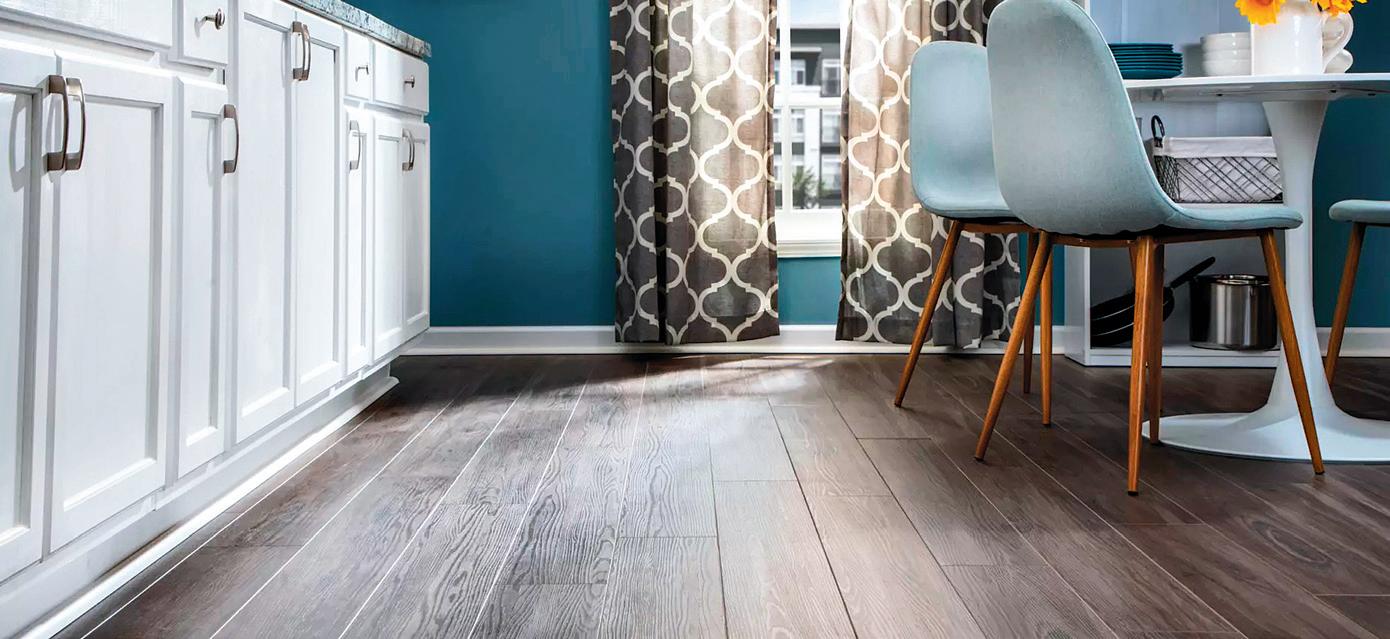
Icy reception
Refrigerators with built-in water dispensers and ice makers are handy, but they take up a lot of valuable space inside the unit. For this reason, many appliance manufacturers are dispensing with them to give their customers more room inside. The alternative is a countertop ice maker, such as the Opal from GE. Just keep in mind that most standalone ice makers are a foot or more deep and almost as wide so your design will have to include a space to house it.

Solid footing
Kitchen floors see it all: High traffic, regular spills, temperature swings and the odd impact from a dropped dish or pan. This is why you’ll want a durable, waterproof and stain-resistant option for the kitchen. Mohawk Flooring’s SolidTech Plus vinyl system includes all that, plus an antimicrobial finish. There’s even a lifetime pet-proof warranty on their finish if it was Fido that made the mess in the kitchen.
OUR
KITCHENS and BATHS
cookinggrooming and 32 BUILDINGEXCELLENCE .CA FALL 2023
Hands off
As much as we’d like to put it fully behind us, we’re not entirely free of COVID-19’s grip. Which is why many homeowners are still focused on creating a germ-free American Standard’s hands-free Avery kitchen faucet is a good tool to help them achieve that goal. It operates manually or with the wave of a dirty hand. The scratch- and corrosion-resistant finish is available in stainless steel or polished chrome.

Stay fresh
Wasting food is bad for your wallet and bad for the planet. Technology can help. Turkish manufacturer Beko claims their refrigerators with the EverFresh+ system of humidity and temperature controlled crisper drawers, which use proprietary Active Fresh Blue Light technology to “simulate natural light conditions to extend the photosynthesis process,” can keep produce fresh for up to 30 days.

Super clean
Fun, eco-friendly fact: Using a dishwasher actually uses less water than washing the same amount of dishes by hand. With the LG Studio smart dishwasher, the dishes aren’t just cleaned, they’re sterilized. High-pressure sprayer arms shoot out air-infused “microbubbles” that help lift off baked on food. For extreme cleaning, the unit’s steam function is certified by the U.S. National Sanitization Foundation to kill 99.999 per cent of bacteria. It also features an industry leading one-hour wash/dry cycle. All added up, the manufacturer claims that dishes will be 38 per cent cleaner with 60 per cent less water spots,
In-house barista
For the coffee lover for whom money is no object, consider a built-in espresso machine with plumbed water line. With the Miele CVA 7845, you can brew two freshly brewed cups at a time, choosing from three different bean drawers.
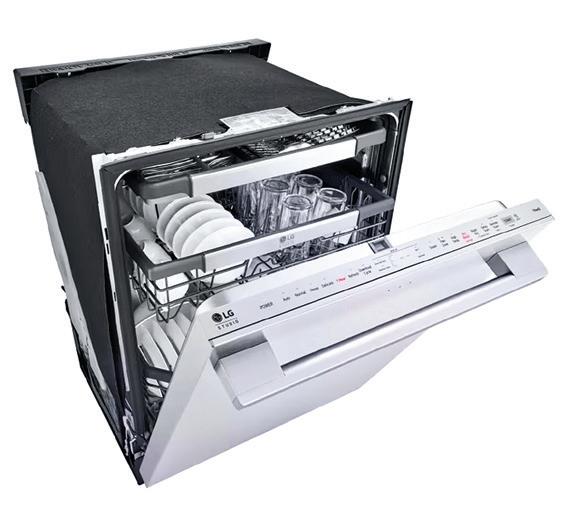

Lighten the load
When moving those heavy appliances in place, you don’t want to wreck your new floors – or your back. An air lifter, such as Crain’s new model 280, makes it possible for one person to move objects up to 800 lbs. with ease. Designed for moving over hardwood or tile, the machine also comes with pads to travel across carpet.
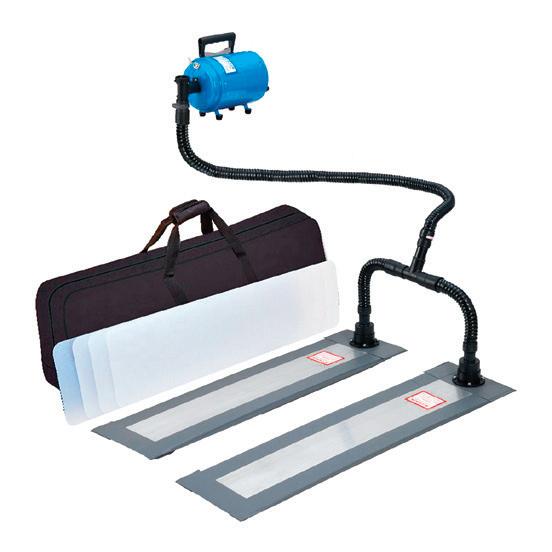
BUILDINGEXCELLENCE .CA
BATHROOM READER
Bathroom, washroom, restroom, WC… whatever you call it, today’s homeowners expect a level of elegance in the room where they take care of private business. Here are some tools and fixtures to help you create next-level lavatories.
Multi-angle measuring ruler


Imagine how easy life would be if tiling only ever required cutting straight lines. Alas, there are always bulkheads, bump outs and fixtures that need to be worked around. Figuring out the angles to cut can lead to some complicated mental
Stay in your lane
In efforts to help alleviate the housing shortage, municipalities including Vancouver and Toronto are easing up restrictions on constructing laneway houses. It’s quickly becoming a growing niche market. They’re typically less than 1,000 sq. ft. spread out over a one-and-a-half storey footprint – half of the ground level is usually reserved for a parking spot. As a result, careful space planning is essential, particularly for the kitchen and bath. Think condo-sized appliances, wall-mounted toilets and space-saving heat pumps for heating and cooling.
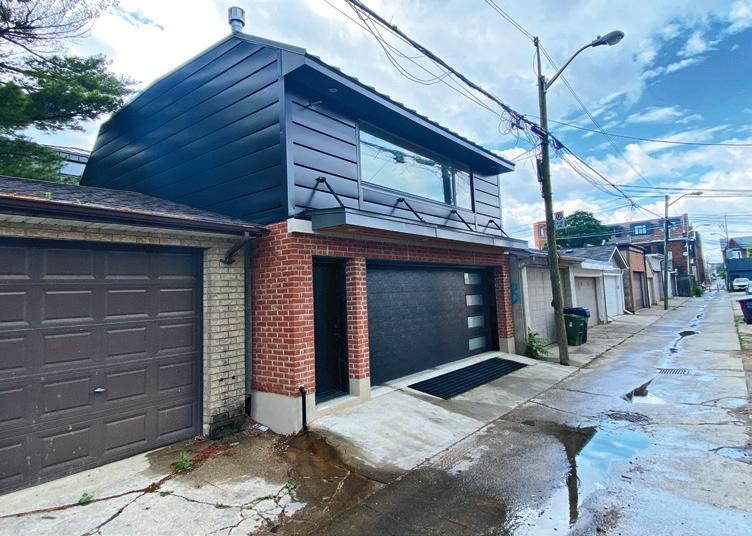
34 BUILDINGEXCELLENCE .CA FALL 2023
Photo: Eurodale Homes
The royal treatment
Most toilets are fairly utilitarian. But Kohler is trying to help them live up to the title of thrones. Witness the Numi 2.0. It comes with all the standard features you’d expect from a modern toilet, such as a dual-flush system and a quiet close lid. After that, everything is next level, from the heated seat and motion-activated lid to LED lighting, warm-air dryer and ability to connect to the Kohler app and Amazon’s Alexa. The stylish design also features “comfort height” seating, perfect for older users.
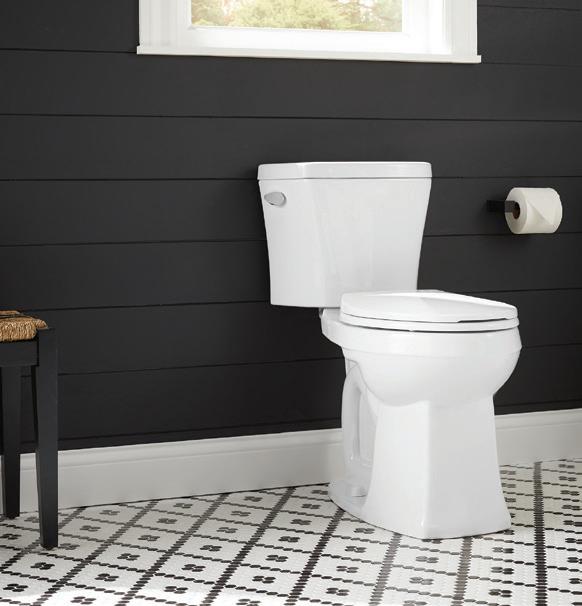

Clean corners
Most bathroom renovators will be familiar with Schluter’s range of waterproofing systems for tubs and showers, stylish drains and floor heating systems. But the company also makes some finishing products. One of its latest is the improved Jolly 90-degree pieces for corners and edges that eliminate mitre cuts and sharp edges. They come with colour-matching corners caps.

Smart mirror, mirror on the wall

If your client can’t afford a Numi toilet but still wants a high-tech bathroom, consider a smart mirror from Montreal-based Hilo. With built-in LED lighting and motion sensors, the touch screen activated system allows users to stream music while they’re in the shower and check their calendar and email or just weather and traffic updates while they brush their teeth.

kitchen & bath fixtures bgshowrooms.com Step Up in Style with the new Avalanche® Toilet. Offering elevated design and standout performance: KeepClean™ surface treatment prevents residue from sticking while QuietClean® engineering keeps water circulating longer and faster to leave a cleaner bowl. BUILDINGEXCELLENCE .CA
Insulation101

A QUICK OVERVIEW OF YOUR OPTIONS
With building codes increasingly tightening the building envelope and boosting insulation levels, and federal and provincial grants incentivizing energy retrofits, it’s important to know the basics when it comes to insulating a home. Here’s a quick overview of the options for sealing the gaps.

FIBREGLASS BATTS
Fibreglass batts are the most affordable and one of the easiest options to install, making them the most common choice. Batts can also be used on interior walls and floors for soundproofing. You do need to install a continuous air and vapour barrier on exterior walls to avoid moisture issues. Note also that airborne glass fibres can irritate the eyes, nose, throat or skin.
RIGID FOAM
Foam boards are made from a variety of materials – polyurethane, polystyrene and polyisocyanurate to be specific – and come in a range of sizes and thicknesses. R-values range from about three to eight per inch. Its density means it also acts as an air barrier, but you need to tape all the seams. With sealed joints, products with the right compressive strength can also work as an effective radon barrier in basement floors.
INSULATED CONCRETE FORMS
Insulated concrete forms, better known by the acronym ICFs, are increasingly showing up on jobsites for everything from foundations to the entire exterior structure up to the eaves. And why not, their Lego-like assembly makes it lighter and easier to install than wooden forms. Plus, you end up with an insulated foundation when the job is done. Again, you’ll pay a premium for the ease of installation and added R-value.
MATERIAL matters
36 BUILDINGEXCELLENCE .CA FALL 2023
LOOSE FILL
The cheapest and easiest way to insulate an attic is with blown-in cellulose. Rent a blower such as Owens Corning’s AttiCat and you can complete attic insulation in less than a day. The total R-value is only limited by the height in the attic available to fill; in some cases, you can get up to R-80. The biggest drawback is that it’s messy, so the attic space can’t be used for storage. It’s also an irritant, so long sleeves, gloves and a respirator should be worn during application and when working with and among the material.
SPRAY FOAM
Contractors are increasingly turning to foam as an all-in-one solution for insulation and an air and vapour barrier, in part because it offers the highest R-values per inch. You need specialty equipment and training to install it, so you’ll pay a premium. Also, the jobsite will be off-limits for a few days during and after installation while the product off-gases.

Filling in the gaps
CANNED FOAM

There are single-use disposable cans available but, for contractors, it’s most cost-effective to buy a decent-quality spray foam gun and use larger refill cans. Be aware that some foams are air sealants and some are insulation which do not air seal. In some tough locations, such as between windows and walls, air sealing and insulation are important, and a mix of foams, tapes and other sealants may be necessary. Just don’t make the rookie mistake of taking an empty bottle off without immediately replacing it. Foam will harden inside the gun and then it’s garbage.

ATTIC BAFFLES
To ensure proper attic ventilation when using blown-in insulation, install attic baffles along the rafters at least a couple feet up from the eaves, used in conjunction with roof venting.
SEAM TAPE
There are a variety of speciality tapes designed to seal air gaps on specific applications – from poly air and vapour barriers and foam boards to sill plates.
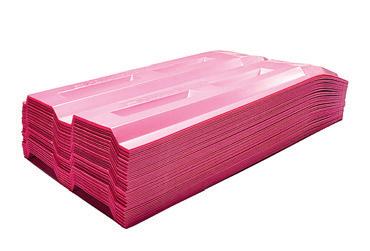
CAULKING AND WEATHERSTRIPPING
While technically not insulation, caulking and weatherstripping kits provide the final finish for sealing up the building envelope. After all, airtightness is the biggest bang for the buck when it comes to cost-effective energy efficiency.
MINERAL WOOL BATTS

Mineral wool batts are available in a variety of sizes designed to fit standard stud-wall centres, and they’re easy to cut to size and shape if needed. Their rigid structure also means they won’t sag in the wall cavity like fibreglass can. Like fibreglass, you need a continuous air and vapour barrier and the material can be an irritant. Its density makes it a great option for sound- and fireproofing between floors or units in a multiplex.

WHO IS TODAY’S BUYER?
ANALYZING THE FINANCIAL FITNESS OF FIRST-TIME HOMEBUYERS IN 2023
BY SUSAN CARTER, VICE-PRESIDENT, MARKETING AND COMMUNICATIONS, SAGEN
The housing market has undoubtedly experienced a whirlwind of economic forces over the last couple of years that have played a pivotal role in shaping first-time homebuyer sentiments and preferences. Homebuyers navigated through a maze of market influences, including home-price fluctuations, inflation, interest rate increases by the Bank of Canada (BoC) and a post-pandemic adjustment.
Against the backdrop of these macroeconomic factors, first-time homebuyers (those who purchased a home in the last two years) continued to outpace all Canadians when it comes to financial fitness, although first-time buyers’ financial fitness declined in 2023, compared to the results from 2021. The 2023 First-Time Homebuyer Survey and Financial Fitness Study is conducted for Sagen by Environics Research in collaboration with the Canadian Association of Credit Counselling Services, and provides a snapshot of Canadians’ homeownership attitudes and financial fitness. The study also found that the general population declined in financial fitness in 2023, while first-time intenders’ (those who intend to enter the market in the next two years) financial fitness remained flat when compared to the previous survey.
According to our survey, compared to 2021, in 2023 fewer FTHBs (first-time homebuyers) were classified into the top financial fitness segment, “looking great,” and more were classified in the middle segment, “managing.” This shift has been driven by more FTHBs saying their financial situation worsened in the past year (20 per cent in 2023, up from 12 per
cent in 2021) and growing proportions who are worried about making ends meet month to month (52 per cent in 2023, up from 36 per cent in 2021).
FTHBs are voicing more concerns about their financial situations and what may come. The 2023 study results showed 78 per cent of FTHBs are now concerned about further
interest rate increases impacting their ability to pay their mortgage (up 15 per cent from 2021 study results) than job loss or other risks. Despite these concerns, their behaviours show that they are still able to pay all their bills, including credit cards and mortgage payments at rates similar to prior years of this study.
MOST FTHB AND FTI FALL INTO THE LOOKING GREAT/LOOKING GOOD OR MANAGING FINANCIAL FITNESS SEGMENTS
LOOKING GREAT/GOOD 39% 32%
15% 23% MANAGING 42% 37% ALERT 4% 7%
FIRST-TIME HOMEBUYERS CONSISTANTLY OUTPACE ALL CANADIANS ON FINANCIAL FITNESS; BUT DECLINE IN 2023 AS INTENDERS ARE FLAT AND CANADIANS DECLINE AS A WHOLE 107.6 38 BUILDINGEXCELLENCE .CA FALL 2023
INSIDER info
VULNERABLE
l FTHB: First-time homebuyers l FTI: First-time intenders
102.1 100.7 102.2 102.8 102.2 98.5 102.5 101.3 102.3 100.6 99.5 98.9 97.7 96.5 93.9 100 113.5 110.8 111.7 109.5 2011 2012 2013 2014 2015 2016 2017 2018 2019 2020 2020 2021 2022 2023
l First-time homebuyers l General population l First-time intenders 115 110 105 100 95 90 85
Optimism for the future
Study results show that longer-term confidence remains high with both FTHBs and FTIs feeling optimistic that the future will improve. Both FTHBs and FTIs also remain much more confident than the general population when it comes to homebuyer confidence, with 43 per cent of FTHBs and 36 per cent of FTIs feeling that it’s a good time to buy a home, compared to 13 per cent of the general population that felt the same.
HOMEBUYER CONFIDENCE IS POSITIVE AMONG FTHB AND FTI GOOD TIME TO BUY
43% 36% NEITHER GOOD/BAD
26% 27%
31% 44% SAY THEIR FINANCIAL POSITION IMPROVED IN THE PAST 12 MONTHS
FIRST-TIME HOMEBUYERS NOW MORE CONCERNED ABOUT FURTHER INTEREST RATE INCREASES IMPACTING THEIR ABILITY TO PAY THEIR MORTGAGE THAN JOB LOSS OR OTHER RISKS.
CONCERNED ABOUT:
MAKING ENDS MEET
52% 43%
LONG-TERM FINANCIAL HEALTH 81% 81%
ABILITY TO PAY ALL THEIR BILLS AND SAVE SOME MONEY
43% 54%
BAD TIME TO BUY
27% 32%
DON’T KNOW
4% 5%
46% 65%
EXPECT THEIR FINANCIAL POSITION WILL IMPROVE WITHIN THE NEXT 12 MONTHS
Buyer profiles continue to evolve
The profile of the first-time homebuyer continues to evolve with study results showing there is a declining incidence of homeownership among the core 25 to 40 age segment each year since measurement began in 2015.
In 2023, only 60 per cent of those aged 25 to 40 owned a home, down from 61 per cent in 2021 and from 71 per cent in 2015. The demographic profile of the FTHB shows that younger FTHBs and lower income FTHBs are decreasing, while there is a defined rise in homeownership among the older age spectrum (with study results showing nine per cent of FTHBs are aged 41 to 45 in 2023).
HOMEOWNERSHIP RATES AMONG 25-40 YEAR OLDS REACHES ALL-TIME LOWS: MILLENNIAL HOMEOWNERSHIP RATES STALL
25-40 year-olds Millennials 2015 2017 2019 2021 2023 2015 2017 2019 2021 2023 71% 64% 62% 61% 60% 55% 58% 60% 63% 62%
39 BUILDINGEXCELLENCE .CA FALL 2023
l FTHB: First-time homebuyers l FTI: First-time intenders
Buyer preferences and behaviours are also changing
When it comes to preferred home types, affordability challenges and the desire to live closer to work have changed the types of homes being bought as well as their proximity to work. Both FTHBs and FTIs have started to shift back to purchasing a home closer to work that is smaller and more expensive.
Regardless of proximity, both groups showed a notable increased preference in having a space to work from home. Data showed that FTHBs’ preferences for condos and detached homes remained relatively the same as previous years, while more FTIs shifted their preferences towards condos.
With many are seeking space to work from home, it is little surprise that energy efficiency is an important consideration when shopping for their home.
As landscape changes, value of information is on the rise
Amidst the backdrop of an ever-changing financial landscape, mortgage information continued to be more important than ever to both FTHBs and FTIs.
Study results showed an increase in the level of importance when it came to the sources that FTHBs and FTIs leveraged to learn about mortgage options, notably with bank representatives, financial advisors and builders/ developers, who each rose in importance since the previous survey.
For more information about the results of Sagen’s First-Time Homebuyer Survey and Financial Fitness Study, visit sagen.ca/ industry-insights.
HOMEOWNERSHIP PREFERENCES AND MOTIVATIONS
PRICE 95% 97% PROXIMITY TO WORK 77% 76%
HAVING A SPACE TO WORK FROM HOME
76% 76% ENERGY EFFICIENCY OF THE HOME 75% 84%
l FTHB: First-time homebuyers l FTI: First-time intenders
PREFERRED TYPE OF HOMES
FTHB AND FTI REPORT INCREASED IMPORTANCE OF EACH INDIVIDUAL SOURCE OF MORTGAGE INFORMATION, NOTABLY BANK REPS, FINANCIAL ADVISORS AND BUILDERS/DEVELOPERS
since
BUILDER/DEVELOPER
51% +9% +10%
l FTHB: First-time homebuyers
l FTI: First-time intenders
Source: 2023 First-Time Homebuyer Survey & Financial Fitness Study: A snapshot of Canadian’s Homeownership Attitudes and Financial Fitness. Study completed by Environics Research on behalf of Sagen Mortgage Insurance Company Canada and in association with the Canadian Association of Credit Counselling Services.
FULLY DETACHED HOME 46% 47% 46% 53%
70% 62% +9% +5%
67%
49%
CONDOMINIUM 24% 24% 23% 19% TOWNHOUSE 18% 18% 19% 14% DUPLEX/SEMI-DETACHED 11% 11% 11% 12% 2023 2021
BANK/CREDIT UNION REPRESENTATIVE
FINANCIAL PLANNER/ ADVISER
73% +13% +7%
2021 since 2021
since 2021 40 BUILDINGEXCELLENCE .CA FALL 2023
Pass the hat for mental health
In any given year, 1 in 5 people in Canada will personally experience a mental health problem or illness. In honour of World Mental Health Day on Tuesday, October 10th, 2023, let's make a difference, together.
Source: Canadian Mental Health Association, 2023
Join us in passing the hat to empower industry leaders, in the construction, development, trades industries to create conversations about mental health care, and have fun!
Pass The Hat encourages company wide teams to engage in fundraising together, alongside corporate donation matching, and exciting workplace activations and games.
This fundraising and wellness initiative is coordinated by Hats On For Awareness, a charitable organization dedicated to breaking barriers and building brighter tomorrows for mental health care in the Greater Toronto Area. To date, we have raised over $1.3 million and continue to disrupt the status quo definition of access for all.
Learn more about Hats On For Awareness at www.hatsonforawareness.com
Help us create access to mental health care for all. Start by passing the hat today.
DESIGN INTERSECTIONS
This October, Toronto becomes the confluence of two revolutionary design worlds. The Toronto Congress Centre proudly co-hosts the third Kitchen+Bath Canada alongside StoneTech Canada Expos from Oct. 25 to 27, merging pioneering visions from both realms.
With the backing of industry associations such as the National Kitchen and Bath Association (NKBA), the Canadian Kitchen Cabinet Association (CKCA), the Decorators & Designers Association of Canada (DDA Canada), and the Terrazzo Tile & Marble Association of Canada (TTMAC), attendees are promised an unparalleled journey into the nuances of contemporary design, stone technology, and innovation. Enthusiasts and professionals alike will navigate through a maze of stone’s transformative roles in modern architecture, seamlessly integrated with avant-garde kitchen and bath designs.
Together, these synchronized expos promise to be a hotspot for global innovation. StoneTech 2023 will unveil the captivating world of stone, blending timeless craftsmanship with contemporary technological marvels, while emphasizing sustainable quarrying and processing. Concurrently, Kitchen+Bath Canada will illustrate the future of home spaces, spotlighting the interplay
between technological advancements, design aesthetics and eco-consciousness.
A global stage awaits participants, with key players like GranQuartz Canada, Breton SPA, Woodbridge, Rendertech Studio and Renewal by Andersen illuminating the path forward. Through a curated blend of live demonstrations, showcases and educational insights, attendees will experience the fusion of age-old artistry with tomorrow’s vision.
Key attractions include the Innovation Showcase, Designer Spotlights and interactive sessions offering a window into the transformative products and inspirations steering the future of design. Across these dual expos, forums will unlock insights into prevailing trends and the forward momentum of both sectors.
In summation, Toronto’s dual expo invites design aficionados, industry specialists and visionaries to a collaborative platform where design sophistication meets stone artistry. Dive deep into the future of design and stonework by registering at kbcexpo.com and stonetechcanada.com.
ABOUT THE CO-LOCATED SHOWS: KITCHEN+BATH AND STONETECH CANADA



In their trailblazing third editions, these co-hosted expos champion the future aspirations of global kitchen, bath and stone industries, setting benchmarks in innovation year after year.
For deeper insights, visit kbcexpo.com and stonetechcanada.com.
SPONSORED CONTENT
42 FALL 2023
THE CO-LOCATED KITCHEN+BATH & STONETECH CANADA 2023 EXPO


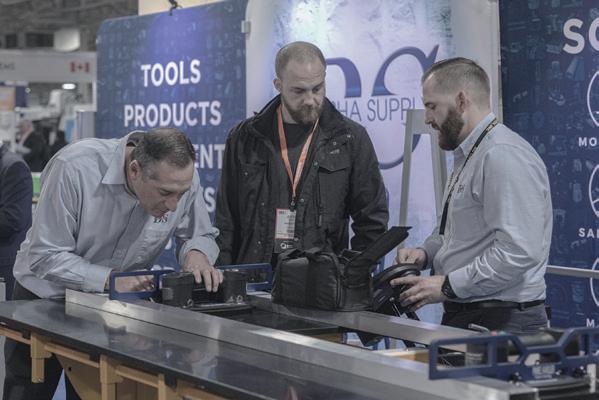

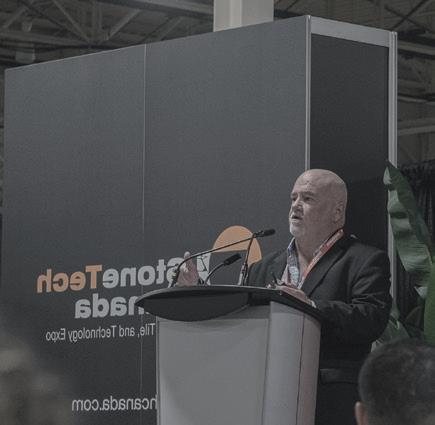









October 25-27, 2023 stonetechcanada.com Canada’s Stone, Tile & Technology Expo JOIN US AT Connect with us @stonetechcanada Contact us info@stonetechcanada.com +1 (905) 232 6331 CO-LOCATED WITH Exhibition & Conference ORGANIZED BY THE Total Marketing Solutions ® HUT Stone Tech Canada Stone, Tile & Technology Expo DISCOVER. +200 EXHIBITOR S LEARN. 12+ SE M INAR S CONNECT. +2000 ATTEN D EE S STRATEGIC PARTNER EXCLUSIVE MEDIA PARTNER SPONSORED BY REGISTER USE PROMO CODE NEXTHOME23

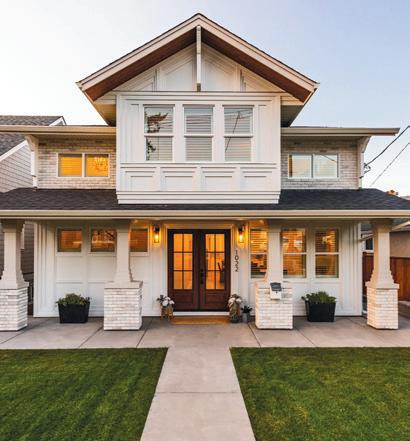
WINTER 2022 THE OFFICIAL MAGAZINE OF THE CANADIAN HOME BUILDERS’ ASSOCIATION Watermark Custom Built Homes, Kamloops, BC. Modular Solutions FINDING Skilled TRADES TOP NEW TOOLS for 2022 PLUS Trucks Vans Best New Industry News. Trends. Advice. Get our magazine delivered to your inbox. Receive every edition of the official magazine of the Canadian Home Builders’ Association To get the latest builder news, deals and offers, sign up to our e-newsletters! To get started visit: nexthome.ca/newsletter Got a story to tell? Email our editor Wayne Karl wayne.karl@nexthome.ca Building Excellence The “must read” journal and online portal covering the homebuilding, renovation, and residential development industry in Canada
CELEBRATING THE BEST OF THE BEST
The CHBA National Awards for Housing Excellence competition recognizes the best in Canadian new homes, renovations, community development, and residential marketing.



GET READY FOR THE BEST SEASON YET!
PERKS OF ENTERING:

















Winners and finalists are also featured on the CHBA National website






ENTRY PERIOD STARTS SOON!






Winners certificate
Winners receive a stunning trophy and Winners, finalists and entrants are featured yearround on social media





chba.ca/housingawards

SUPREME
COLLECTION WINDOWS
Centra Windows’ Supreme Collection
Windows are a revolutionary hybrid product that combine the exceptional efficiency of vinyl with the incredible durability of aluminum. This top-quality, custom-made, Canadian-manufactured product offers endless curb appeal and unbeatable comfort. Visit their website to learn more.
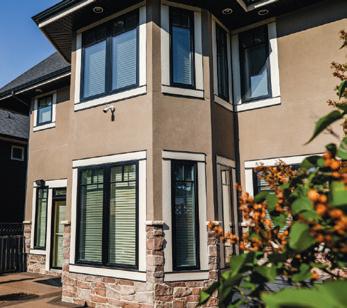
CENTRA WINDOWS centra.ca
SILESTONE® LE
CHIC
Silestone® Le Chic is here, a revival of natural stone’s emblematic veined patterns, where sophistication and timeless allure is all around you. Each color has been masterfully crafted with HybriQ+ Technology using 99% recycled water and 100% renewable electric energy.

COSENTINO cosentino.com/en-ca/silestone/le-chic
STYROFOAM™ BRAND XPS INSULATION
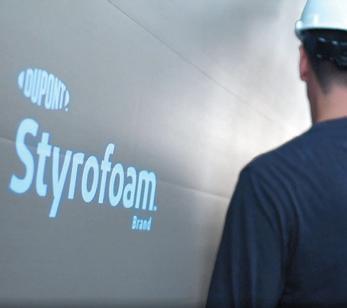
Rooted in sustainable technology, Styrofoam™ Brand XPS Insulation is now even more sustainable with a low GWP formulation – and a new grey color –offering a 94% reduction in embodied carbon without compromising on performance.
DUPONT dupont.ca
EV SMART BREAKER CHARGERS
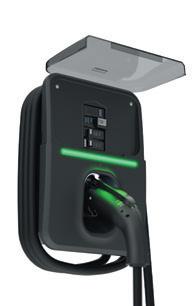

The future of transport is electric. Enter Green Motion EV smart breaker chargers – fast AC charging, powered by smart breakers. Eaton chargers deliver real-time energy insights and enable integration with on-site renewable and energy storage systems to advance smart and sustainable energy systems to power today and tomorrow.
EATON
EatonCanada.ca
GEORGE BROWN COLLEGE’S SCHOOL OF CONTINUING EDUCATION
Companies working in the building sector strive to be leading edge. The programs offered by the School of Continuing Education at George Brown College provide students with the skills to succeed in this increasingly complex industry. Taught by professionals using the latest tools and standards, courses are available online, evenings and weekends.

GEORGE BROWN COLLEGE coned.georgebrown.ca/construction
HUMM
At humm, we provide flexible financing for ecommerce and in-store purchases, up to $30,000. Our completely digital financing option brings a unique blend of benefits designed to propel business growth.
HUMM shophumm.com

FEATURED companies
46 BUILDINGEXCELLENCE .CA FALL 2023
JWC8500 SERIES WINDOW
Embrace the future with JELD-WEN® of Canada’s most energy-efficient window. JELD-WEN® of Canada proudly presents the innovative JWC8500 series window, meticulously engineered to exceed customer expectations with the perfect blend of style, performance and energy savings.
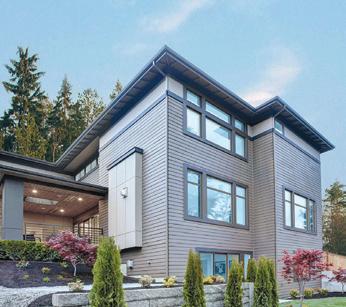
JELD-WEN® jeld-wen.ca
YOUR BUSINESS, YOUR FUTURE. OUR FOCUS
No one can predict the future of the real estate and construction sector, but you can prepare your business for the best possible outcomes, while capitalizing on opportunities. MNP’s proven track record in this industry ensures you get the innovative business strategies, efficient operations and a tax plan that takes you from where you are to where you want to be.
MNP mnp.ca
MANAGED DECOR INFRASTRUCTURE FOR BUILDERS
Accelerate your sales and selections program with My Design Studio’s AI-driven visualizer platform and Decor Management expertise. Increase your profitability. Simplify your processes. Learn more at my-designstudio.com.
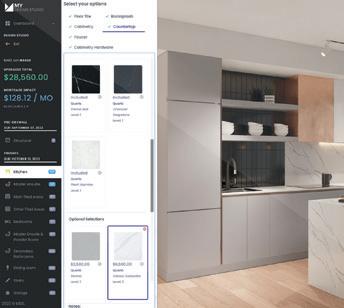
MY DESIGN STUDIO my-designstudio.com
SUSTAINABLE BUILDING MATERIALS
Owens Corning, a global leader in sustainable building materials, offers integrated solutions in Composites, Insulation, and Roofing. With 19,000 employees across 31 countries, we create value for customers while fostering sustainable communities through material innovation.

OWENS
CORNING CANADA
owenscorning.ca
RELIANCE HOME COMFORT
For over 60 years, Reliance has been providing builders with essential equipment: HVAC, indoor air quality, water systems, smart home technology, and new EV charging solutions. Our specialized team ensures personalized service from construction to homeowner support post move in.
RELIANCE HOME COMFORT
reliancebuilderprogram.com

GRANDVIEW MULTI-SLIDE PATIO DOOR SYSTEM
Westeck’s GrandView Multi-slide patio door system offers the ultimate experience for clients to create and enjoy unique indoor / outdoor living spaces while providing year-round comfort with high thermal performance.

To find out more call Westeck today or visit their website
WESTECK westeckwindows.com
FEATURED companies
47 BUILDINGEXCELLENCE .CA FALL 2023
EVE OF A NEW ERA
INNOVATIVE DEVELOPMENT IN LONDON, ONT. (UN)PAVING THE WAY FOR THE FUTURE
BY NATASHA ROMBOUGH, DIRECTOR OF MARKETING AND COMMUNICATIONS, CHBA
In London, Ont., a new kind of community is rising up. EVE Park, by developer s2e Technologies Developments, is not only architecturally fascinating, it shows just how livable a sustainable home can be.
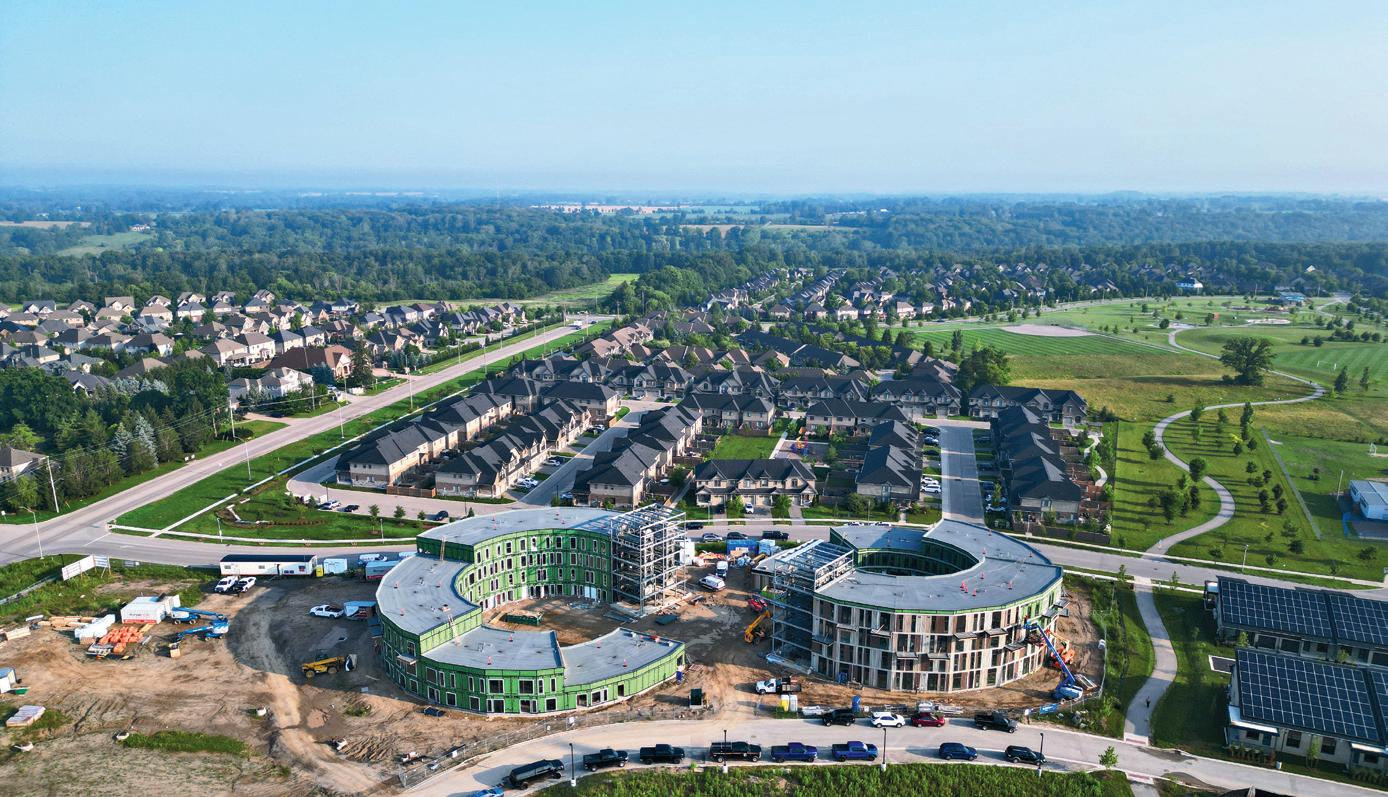
BEGINNINGS
EVE Park is part of the Greater Sustainable West 5 Community – North America’s first and largest mixed-use net zero community. Starting in 2014, s2e played a seminal role in the creation of West 5 by bringing together the project’s research partners, knitting together an innovative vision and advising West 5’s developer, Sifton Properties, on renewable energy technologies. In 2017, s2e started on the next logical step: Reconceptualizing housing through a broader sustainability lens; net zero, of course, but also disrupting existing market assumptions about the relationship of housing to mobility, land use and more. The outcome is now under construction with the first phase nearly sold out and the second phase soon to begin.
Project Lead Ashley Hammerbacher has an undergraduate degree in Bioengineering and a graduate degree in Civil and Environmental Engineering. To make it all happen, Hammerbacher credits the unique and heavy-hitting project team they assembled. “The idea was to bring in a wealth of experience and creativity from international players to come up with something unique and cutting-edge,” she says. “Then we critically found a lot of local partners to help with implementation. They ensured the project could be built in London – everything from accessing resources, to adopting modular construction techniques that could be used to reduce on-site construction waste.”
The result is a design that some have described as futuristic, while others note echoes of historic European courtyards. Four helical clusters of Net Zero townhomes and stacked townhomes with solar panels on the roofs are each wrapped around a shared greenspace. Every cluster starts with one storey, then goes up to two, then three and four as it ramps up around the circle, and each cluster has 21 units. The low end of the building has shared services (such as mail and garbage), and the high end of the building terminates with a pair of enclosed rotational parking towers.
SUSTAINABLE BEYOND JUST BUILDING EMISSIONS
Where we live and how we get around produce two of our biggest emissions streams. EVE Park gives consumers the choice to radically reduce both at the same time. The site is a quick walk to West 5 amenities, and to nearby parkland. For errands slightly farther afield, there are plans for an e-bike share. To help people off-ramp from internal combustion engines, residents can opt-in to an EV car share program (EVE-Car), which is planned to eventually be made available to the broader West 5 Community.
Hammerbacher says that the option to do without a second car has been a sales draw. The annual savings gained by not needing a second car, combined with the comfort of knowing one will be there if needed, is attractive to buyers.
A key reason for parking towers was to create greenspace, which enhances quality of life for residents. The towers also have a practical advantage. What makes EVE Park’s garage innovative is the integration
DEVELOPERS’ corner
48 BUILDINGEXCELLENCE .CA FALL 2023
of a high-capacity EV charger fixed in the tower, with the cars rotating around it. This solution deals with the increasingly common headache of waiting for a free charging spot.

Residents will be able to access their vehicle quickly and easily through an app. It’s a method of parking that can certainly be used by larger developments that have greater parking requirements, with some adaptations, says Hammerbacher. “It’s a very versatile solution that is really popular in Asia and some European areas, where there are very large deployments with multiple towers,” she explains. “We are not reinventing the wheel, which is comforting. From a mechanics perspective it’s quite simple.” Given that s2e says parking carousels can reduce land given to surface parking by a factor of eight, it’s an option other developers may want to consider.
POWERING A NEIGHBOURHOOD
One of the big hurdles that Net Zero builders often face is regarding the local electrical grid. Unless the home has batteries, which are still quite costly, most net zero homes sell excess electricity created by solar panels back to the municipality. The costs incurred during times of low production are offset by that excess profit, resulting in net zero energy consumption. The problem is that many municipalities are not yet ready for such a setup, which makes blazing the trail particularly challenging for those builders first out of the gate in their area.
EVE Park didn’t experience the same challenges in that regard, thanks in part to s2e’s involvement with West 5 starting in 2014. The relationships built with London Hydro and the City of London for that project meant that the groundwork already existed for EVE Park. According to s2e, London Hydro has been a particularly forward-looking partner. The utility’s support for the project may have contributed to London getting a major Net Zero community built before New York, Toronto, San Francisco or any other city in North America.
The work-from-home trend has made resilience of residential power supply a higher consumer priority. The greater West 5 micro-grid, to which EVE Park is connected, has a battery system that serves the entire community in the event of a temporary power outage. The system was sized looking at historical outage events and has the capacity to cover for the majority of them.
LIVABLE HOMES
Each of the 84 homes in EVE Park include their own private entrance, fully equipped kitchen, in-suite laundry and eco-friendly finishes. They come with one, two, three or four bedrooms. Since all units needed to be energy-modelled to ensure they could operate at a Net Zero, appliances were pre-selected by s2e.
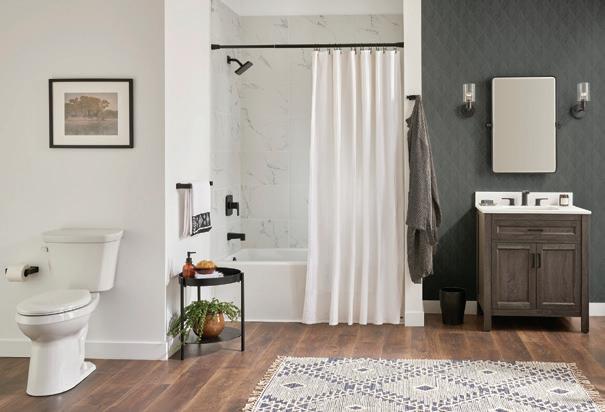
But is the fact that the home is Net Zero attractive to buyers?
Hammerbacher says that different aspects speak to different people. Some are really interested in air tightness from a health perspective and it’s a powerful selling point for them. Others are fascinated with the EV side of things. “Purchasers are aware of the climate crisis,” she says. “They’re aware that our product is sustainable and not just green washing. I’ve been inspired with the things that people are interested in.”
Credit for that can at least partially be attributed to how s2e has trained their sales staff. They’re made aware of not only the facts about the technology in the homes they’re selling, but how it affects the
health, wellbeing, and the total cost of ownership for residents – like the fact that having a second car costs the average household more than they think, and that an energy-efficient, no-gas, net zero home tied to the grid with a net-metering contract future-proofs buyers against energy price inflation.
REPLICABLE COMMUNITIES
Like most who are passionate about limiting our impact on the planet, s2e hopes that other developers see that Net Zero communities are very possible and can be done across Canada. The technology is readily available; it is how it’s used that makes EVE Park unique, and they look forward to even more innovation coming from others. Hammerbacher has high hopes for the future. “It would be great to see this community inspire developers across Canada, North America, and the world to try it as well. Let’s all do it!”
Western Canada’s premier plumbing, heating, and electrical wholesaler bartlegibson.com Take it all in NEW TRIBUNE™ FAUCET COLLECTION gerber-ca.com BUILDINGEXCELLENCE .CA
COMMUNITY SPIRIT
Canadian Home Builders’ Association (CHBA) members have been building, developing, and renovating Canadian homes for generations. We are sharing the extraordinary contributions CHBA members make in their communities every day through our ongoing #CdnBuilt for Generations campaign. Here are a few recent stories. To read more stories follow our hashtag or visit blog.chba.ca/category/giving-back.

Stranville Living renovates home for deserving family in Lethbridge, Alta.

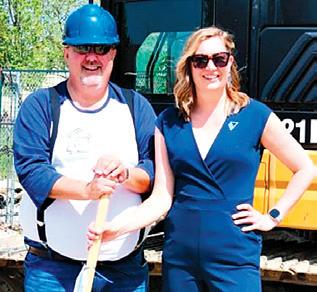
Branthaven Homes donates $1 million to Mohawk College to support residential construction education


Branthaven Homes, a member of West End Home Builders’ Association, made a generous $1-million donation to Mohawk College’s workforce development in the construction trades. The contribution will promote new education and employment opportunities in the residential construction sector for those in underserved communities through the college’s City School training program. “This powerful gift will allow City School to provide training for people and help them secure lasting, meaningful work in construction trades, while addressing labour shortages in the field,” says Ron J. McKerlie, president and CEO of Mohawk College and president of the Mohawk College Foundation. The donation will see up to 1,200 students step into careers in the construction trades, helping them and their families out of the cycle of multi-generational poverty.
St. Thomas & Elgin HBA builder to help build 40 Net Zero Ready tiny homes for the homeless
St. Thomas & Elgin Home Builders’ Association member Doug Tarry Homes has partnered with the YWCA and another builder in St. Thomas, Ont. to build 40 tiny Net Zero Ready Homes for those experiencing homelessness in the region. Known as Project Tiny Hope, the community will not only aim to foster a sense of dignity and belonging through common spaces such as a community garden and collective learning kitchen, but also provide far more energy efficient and less expensive living options for the occupants. Further, the one-, two-, and three-bedroom affordable rental units aim to support those from all walks of life – more than half of the homes will be reserved for especially vulnerable groups, with 20 going to women and women-led families, five to youth between 16 and 24, and four to Indigenous people.
BILD Lethbridge member Stranville Living renovated the entire main floor of one deserving family’s home through its community initiative called the “Who Deserves Better Challenge.” The project helped the Blakes, a family of four whose eldest child, Harrison, has been diagnosed with an ultra-rare terminal genetic disorder called GM1 Gangliosidosis, leaving him unable to move, speak or feed himself on his own. With their growing family and Harrison’s diagnosis, the Blakes’ home was no longer suiting their needs – and it was in dire need of window and door repairs. With the help of community partners, Stranville Living kicked into high gear, completing the full renovation in less than a week. The team was able to surprise the Blake family with a home that was more functional and better suited to their family’s needs, providing a safe and comfortable home for them now and into the future.
THE GIVING BACK PAGE
50 BUILDINGEXCELLENCE .CA FALL 2023
WELCOME TO THE FUTURE OF WINDOWS
DURABLE AND LOW-MAINTENANCE VINYL AND HYBRID CONSTRUCTION

AVAILABLE IN PREMIUM FINISHIELD LAMINATE COLOURS


SLEEK, LOW-PROFILE HARDWARE DESIGN
ENERGY-EFFICIENT DUAL-PANE AND TRI-PANE LOW-E GLASS OPTIONS

26% LOWER PROFILE FRAME INCREASES GLASS AREA
UP TO 22% BETTER ENERGY EFFICIENCY
As climate change brings more extreme weather across Canada, the demand for energy-efficient products that can stand up to the elements is higher than ever. JELD-WEN® of Canada proudly introduces the groundbreaking JWC8500 series window—a perfect blend of style, performance, and energy savings, meticulously engineered to exceed customer expectations.
Let your customers discover the advantages of JELD-WEN of Canada’s most energy-efficient window. 2030-rated to meet Canada’s U-Factor 0.14 (U.S./I-P) / 0.82 (Metric/SI) or ER 44 building codes, these industry-leading windows are designed to significantly reduce energy costs while ensuring year-round comfort in homes.
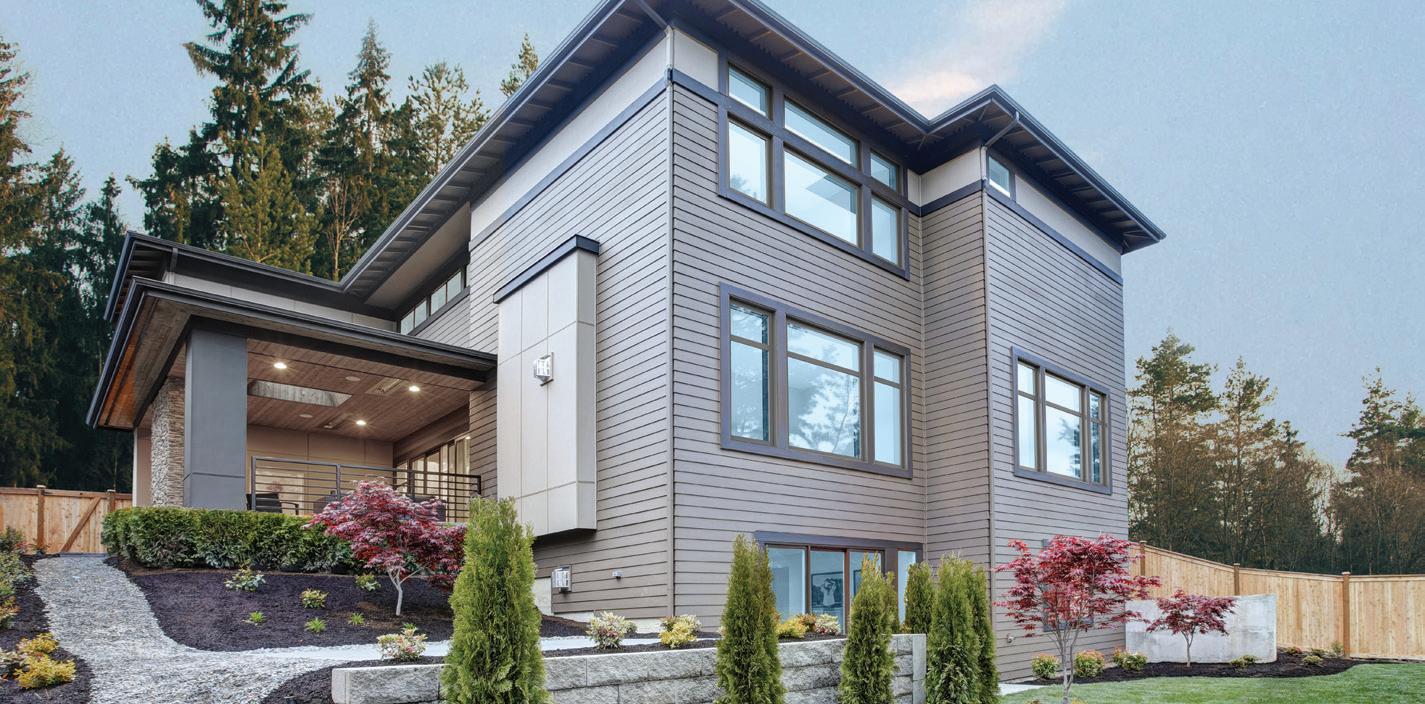
Tailored to meet the regional needs of homeowners, our windows are the perfect fit for professionals and homeowners across Canada, seamlessly blending functionality and style to suit any project.
Discover the JWC8500 series window from JELD-WEN of Canada—and let your builds be the future of home comfort.
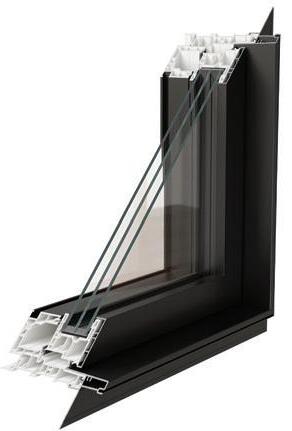

LEARN MORE TODAY jeld-wen.ca
Your business. Your future. Our focus.
No one can predict the future of the real estate and construction sector, but you can prepare your business for the best possible outcomes, while capitalizing on opportunities. MNP’s proven track record in this industry ensures you get the innovative business strategies, efficient operations and a tax plan that takes you from where you are to where you want to be.


MNP.ca
Get Net Zero Energy Ready with free expertise and incentives
As part of the Residential Savings by Design program from Enbridge Gas, new construction builders and developers can receive expert advice and incentives to build a Net Zero Energy Ready (NZER) discovery home.
We’ll help you explore what NZER homes look like—fully supported with building science experts, on‑site training and more. Visit enbridgegas.com/NZER to learn more.

How you can benefit
Get customized, free, one‑on‑one coaching A $30,000* value.
Discovery home incentive Get $15,000† to help offset the costs to upgrade to NZER standards.
Enhance your knowledge of NZER homes
Free support from building science experts.
Future‑proof your business
Stay ahead of upcoming code changes.
Gain a competitive edge
Differentiate your homes with highly energy‑efficient technologies and systems.
Get recognized Each NZER home is verified by the Canadian Home Builders’ Association.
Savings by Design | Residential
To participate, you must meet the following criteria:
• Must have not previously built a NZER discovery home.
• In the design development stage or earlier in the design process.

• Low rise residential single family, semi detached and townhomes qualify.
• Project must be located within the Enbridge Gas service area.
Due to popular demand, the 2023 Net Zero Energy Ready discovery home program from Savings by Design is now closed for enrolment. Join our waitlist for 2024—space is limited! * This has no cash value. † HST is not applicable and will not be added to incentive payments. Builders and developers (inclusive of all subsidiaries) will only be able to participate once and receive a single incentive. Terms and conditions apply. Visit enbridgegas.com/NZER for details. © 2023 Enbridge Gas Inc. All rights reserved. ENB 1441 05/2023 Visit enbridgegas.com/NZER to submit your contact details and to express your interest. Join the 2024 waitlist — Building to NZER standards meets buyers’ needs with:
energy performance
environmental impact
energy consumption
comfort
Improved
Lower
Reduced
Enhanced
Is your project eligible?
We’re finding low-carbon energy in unlikely places
We’re finding low-carbon energy in unlikely places
Like biogas captured from compost to create Renewable Natural Gas1 (RNG). It’s a low-carbon energy2 that can be used in homes and businesses across the province—and we’re adding more to our supply every year.
We’re finding low-carbon energy in unlikely places
Like biogas captured from compost to create Renewable Natural Gas1 (RNG). It’s a low-carbon energy2 that can be used in homes and businesses across the province—and we’re adding more to our supply every year.
Our natural gas delivery system can provide RNG to buildings and developments to reduce greenhouse gas emissions. This means buildings can meet strict emissions guidelines without expensive upgrades or retrofits.
Like biogas captured from compost to create Renewable Natural Gas1 (RNG). It’s a low-carbon energy2 that can be used in homes and businesses across the province—and we’re adding more to our supply every year.



Find out more about RNG at fortisbc.com/rngbuild. Connect with us @fortisbc
Our natural gas delivery system can provide RNG to buildings and developments to reduce greenhouse gas emissions. This means buildings can meet strict emissions guidelines without expensive upgrades or retrofits.
Find out more about RNG at fortisbc.com/rngbuild. Connect with us @fortisbc
Our natural gas delivery system can provide RNG to buildings and developments to reduce greenhouse gas emissions. This means buildings can meet strict emissions guidelines without expensive upgrades or retrofits.
Find out more about RNG at fortisbc.com/rngbuild. Connect with
1Renewable Natural Gas is produced in a different manner than conventional natural gas. It’s derived from biogas, which is produced from decomposing organic waste from landfills, agricultural waste and wastewater from treatment facilities. The biogas is captured and cleaned to create Renewable Natural Gas (also called biomethane). 2When compared to the lifecycle carbon intensity of conventional natural gas. The burner tip carbon intensity of FortisBC’s current RNG portfolio is 0.29 gCO2e/MJ. FortisBC’s current RNG portfolio lifecycle emissions are negative 22 gCO2e/MJ. This is below B.C.’s low carbon threshold for lifecycle carbon intensity of 36.4 gCO2e/MJ as set out in the 2021
FortisBC uses the FortisBC name and logo under license from Fortis Inc. (23-026.20 06/2023)
1Renewable Natural Gas is produced in a different manner than conventional natural gas. It’s derived from biogas, which is produced from decomposing organic waste from landfills, agricultural waste and wastewater from treatment facilities. The biogas is captured and cleaned to create Renewable Natural Gas (also called biomethane). 2When compared to the lifecycle carbon intensity of conventional natural gas. The burner tip carbon intensity of FortisBC’s current RNG portfolio is 0.29 gCO2e/MJ. FortisBC’s current RNG portfolio lifecycle emissions are negative 22 gCO2e/MJ. This is below B.C.’s low carbon threshold for lifecycle carbon intensity of 36.4 gCO2e/MJ as set out in the 2021 B.C. Hydrogen Strategy.

B.C. Hydrogen Strategy. FortisBC uses the FortisBC name and logo under license from Fortis Inc. (23-026.20 06/2023)
1Renewable Natural Gas is produced in a different manner than conventional natural gas. It’s derived from biogas, which is produced from decomposing organic waste from landfills, agricultural waste and wastewater from treatment facilities. The biogas is captured and cleaned to create Renewable Natural Gas (also called biomethane). 2When compared to the lifecycle carbon intensity of conventional natural gas. The burner tip carbon intensity of FortisBC’s current RNG portfolio is 0.29 gCO2e/MJ. FortisBC’s current RNG portfolio lifecycle emissions are negative 22 gCO2e/MJ. This is below B.C.’s low carbon threshold for lifecycle carbon intensity of 36.4 gCO2e/MJ as set out in the 2021 B.C. Hydrogen Strategy. FortisBC uses the FortisBC name and logo under license from Fortis Inc. (23-026.20 06/2023)
us @fortisbc
BIG We’ve got
BIG We’ve got
When it comes to building high-performance, energy-efficient homes that are attractive to potential buyers, we’re with you every step of the way. And we have thousands of dollars in rebates available* on either home performance or high-efficiency water heaters—plus appliances— to make it even easier for you.
When it comes to building high-performance, energy-efficient homes that are attractive to potential buyers, we’re with you every step of the way. And we have thousands of dollars in rebates available* on either home performance or high-efficiency water heaters—plus appliances— to make it even easier for you.

To qualify for this year’s big rebates, pre-register online by December 31, 2023.
To qualify for this year’s big rebates, pre-register online by December 31, 2023.
Contact the FortisBC energy solutions manager in your area, or visit fortisbc.com/newhomerebate.
Contact the FortisBC energy solutions manager in your area, or visit fortisbc.com/newhomerebate.
*Full terms and conditions apply, available at fortisbc.com/newhomerebate.
*Full terms and conditions apply, available at fortisbc.com/newhomerebate. FortisBC Inc. and FortisBC Energy Inc. do business as FortisBC. The companies are indirect, wholly owned
FortisBC Inc. and FortisBC Energy Inc. do business as FortisBC. The companies are indirect, wholly owned subsidiaries of Fortis Inc. FortisBC uses the FortisBC name and logo under license from Fortis Inc. (23-138.5 07/2023)
(23-138.5 07/2023)
Inc. FortisBC
subsidiaries of Fortis
uses the FortisBC name and logo under license from Fortis Inc.

























































































































































































































































